
Your shopping cart is empty!

Spars & Rigging

Refine Search
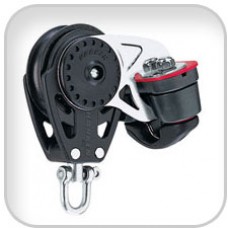
Harken, 57mm Carbo Block w-Cam Cleat, 2615
Sheave dia. (in): 1 9/16Sheave dia. (mm): 40Length (in): 2 3/4Length (mm): 70Weight w/shackle (oz): ..
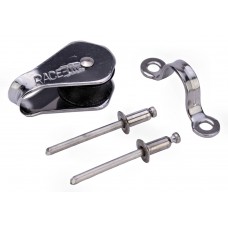
Sunfish, Boom Bullet Block Kit, 90636
This is the standard boom bullet block for Sunfish that includes the eyestrap and rivets. Inclu..
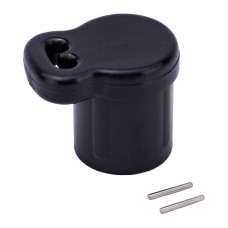
Sunfish, Boom Cap w/Eye, 90428
This plastic cap mounts to the outer end of the Sunfish boom. Eyelet allows the outhaul to be tied o..
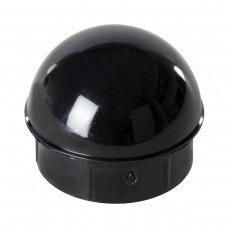
Sunfish, Boom Cap w/o Eye, 90427
Smooth Sunfish boom cap. Does not come with eye Old # 43106..
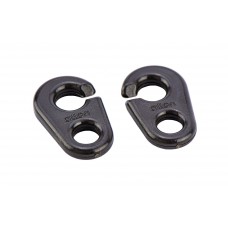
Sunfish, Brummel Hook (Package of 2), 91149
Brummel Hooks. Used for a quick connect on the current daggerboard retaining line. Old #20619Sold in..
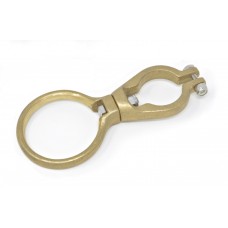
Sunfish, Gooseneck Assembly, 90638
Classic Sunfish bronze gooseneck. Attaches to the Lower Boom and Mast..
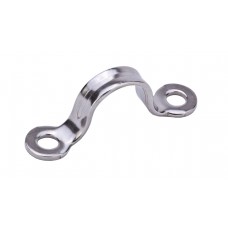
Sunfish, Heavy Guage Boom Eye Strap, 91095
Stainless Boom Eyestrap. Used to hold mainsheet blocks on Sunfish Lower Boom.45mm Length x 40mm Eye ..
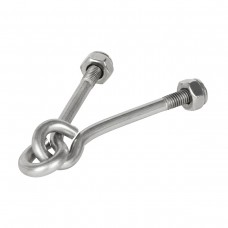
Sunfish, Interlocking Eye Bolt, 90412
Interlocking bolt for Sunfish booms. This bolt runs through the booms and connects to the sail using..
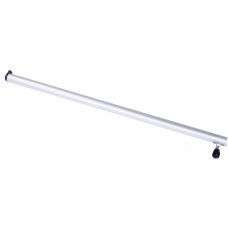
Sunfish, Lower Boom Race, 89413
Old # 99228Item is over-sizedThis is not a Standard Shipping item, and is excluded from our standard..
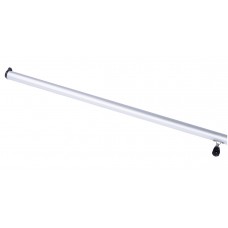
Sunfish, Lower Boom, 89414
Sunfish lower boom.Item is over-sizedThis is not a Standard Shipping item, and is excluded from our ..
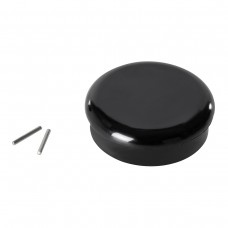
Sunfish, Lower Mast Cap w/Fastener, 90430
Plastic plug for the bottom of the Sunfish mast. Includes fastenersComes with groove pins Old # 7903..
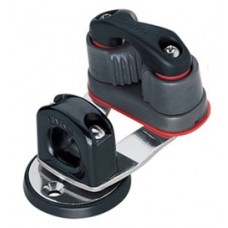
Sunfish, Mainsheet Cam Cleat, 91063
Mainsheet Cam Cleat: A swivel base for mainsheet. Includes a swivel base, bullseyes fairlead, and st..
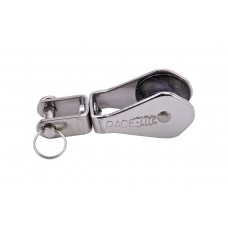
Sunfish, Mainsheet Swivel Block (Open Shackle), 91252
Open loop swivel mainsheet block by Race-Lite. Max Line 3/8"..
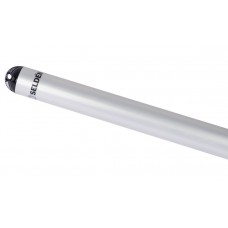
Sunfish, Mast, 89023
Complete Sunfish mast section. Includes top and bottom plugsReady to sail Old # 62401Item is over-si..
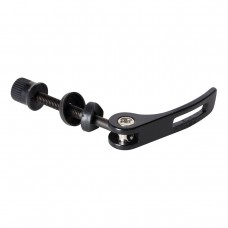
Sunfish, Quick Adjust Lever, 90563
Quickly adjust the position of your lower boom relative to the mast. This quick adjustable lever doe..
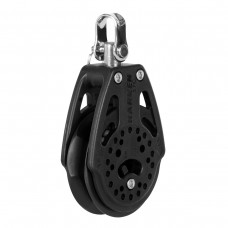
Sunfish, Ratchet Block (2-1/4), 91333
A fantastic block for a variety of applications. A great ratcheting mainsheet block with smooth acti..
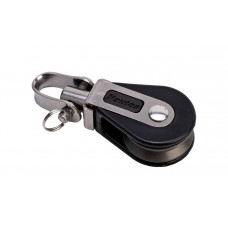
Sunfish, Single Boom Block, 10110
This is the forward most block on the Sunfish boom. Basic block, no swivel. Max. line 3/8" Old # 910..
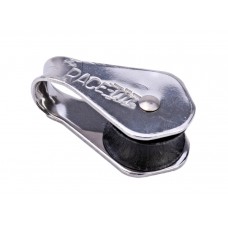
Sunfish, Single Boom Block, 91042
This is the forward most block on the Sunfish boom. Basic block, no swivel. Max. line 3/8" Old # 431..
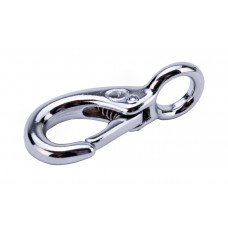
Sunfish, Snap Hook, 90591
Sunfish Mainsheet fasteye snap for newer style 2-LOOP bridle. Chrome Max. Line Size 3/8" Old # ..

Sunfish, Snap Trigger, 91208
This is the bronze Sunfish snap trigger, tie the end of the mainsheet to this and then snap it onto ..
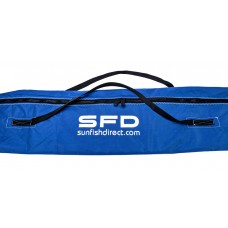
Sunfish, Spar Bag, 87132
The Sunfish Spar bag is a durable bag designed to store and protect Sunfish spars. The Sunfish spar ..
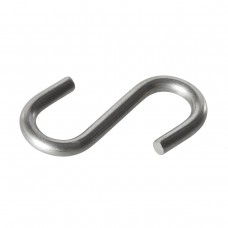
Sunfish, Stainless Steel 'S' Hook, 90642
The 'S' hook connects the tack of the sail to the interlocking eyebolt, where the (2) booms meet on ..
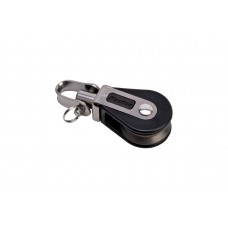
Sunfish, Swivel Eye Block, 10111
This is the furthest aft block on the Sunfish boom. Equipped with a swivel for smooth action of the ..
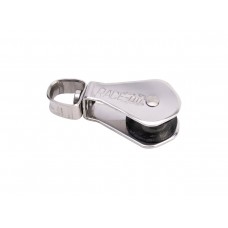
Sunfish, Swivel Eye Block, 90411
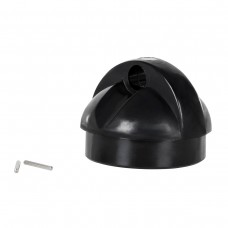
Sunfish, Top Mast Cap, 90431
This is the cap fitting for the top of the Sunfish mast. Includes fasteners Old # 79031..
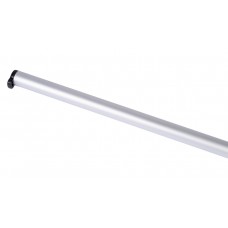
Sunfish, Upper Boom, 89415
Old # 62405Item is over-sizedThis is not a Standard Shipping item, and is excluded from our standard..
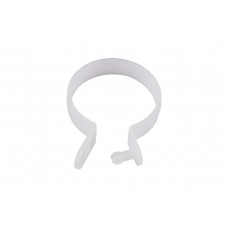
Sunfish Sail Ring (Single Ring), Clear
The sail rings fit around the booms and clip onto the sail, holding it securely. Quantity:..
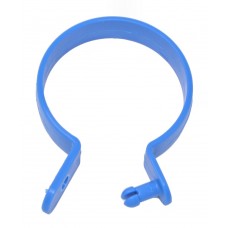
Sunfish Sail Ring (Single Ring), Blue
The sail rings fit around the booms and clip onto the sail, holding it securely. Qua..
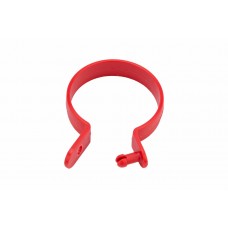
Sunfish Sail Ring (Single Ring), Red
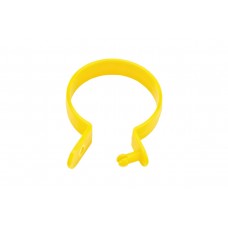
Sunfish Sail Ring (Single Ring), Yellow
How to Rig a Sunfish: Step-by-Step Guide to Sail Away
Imagine the gentle ripple of water, the whisper of a breeze, and the thrill of harnessing the wind to propel yourself across the water. For sailors, there’s no feeling quite like it, and the Sunfish sailboat offers the perfect vessel for such adventures.
In this comprehensive guide, we embark on a journey to help you master the art of rigging a Sunfish sailboat. Whether you’re a novice eager to set sail for the first time or a seasoned sailor in need of a refresher, this article has you covered.
The Sunfish sailboat is renowned for its simplicity, making it an ideal choice for sailors of all skill levels. Our guide will walk you through the essential steps, from setting up the mast and sail to ensuring your boat is shipshape. So, whether you’re preparing for a leisurely day on the water or gearing up for some friendly racing, read on to discover the secrets of rigging a Sunfish and unlocking the full potential of this iconic sailboat.
Introduction to the Sunfish Sailboat
Nestled at the intersection of simplicity and pure sailing joy, the Sunfish sailboat has been captivating the hearts of sailors for generations. With a history dating back to the mid-20th century, this beloved boat is renowned for its straightforward design and the exhilarating experiences it offers on the water.
For anyone looking to venture into the world of sailing, mastering the art of rigging a Sunfish is an essential skill. It’s the very foundation upon which your sailing adventures will be built. Whether you’re a novice seeking your maiden voyage or a seasoned sailor revisiting the basics, understanding how to properly rig a Sunfish is paramount for safety and a delightful time out on the water.
In this guide, we’ll embark on a journey to demystify the rigging process, step by step. By the end, you’ll not only have the knowledge but also the confidence to set sail on your Sunfish, ready to embrace the wind, waves, and the endless possibilities of the open water. So, let’s dive in and uncover the secrets of rigging the Sunfish sailboat for an unforgettable sailing experience.
Gather Your Tools and Equipment
Before you embark on the process of rigging your Sunfish, it’s crucial to ensure you have all the necessary tools and equipment at your disposal. Here’s a comprehensive list of items you’ll need:
- Sunfish Sail: The sail is the heart and soul of your boat. Ensure it’s in good condition, free of tears or significant wear.
- Mast: The mast is the vertical pole that supports the sail. It should be straight and secure.
- Boom: The boom is the horizontal spar that extends the foot of the sail. Check for any signs of damage or rust.
- Lines (Ropes): You’ll need various lines for controlling the sail, including the halyard (raises the sail), mainsheet (controls the angle of the sail), and other lines for rigging adjustments.
- Daggerboard: This board helps with stability and direction. Ensure it’s securely in place and free of damage.
- Rudder and Tiller: The rudder controls your boat’s direction, while the tiller is the handle you use to steer. Make sure they’re both functioning correctly.
- Life Jacket: Safety first! Always wear a properly fitted life jacket when sailing.
- Paddle: In case the wind dies down or you need to maneuver in tight spaces, a paddle can be a lifesaver.
- Bailer or Sponge: To keep the cockpit dry and free of water, especially if it splashes in.
- Tool Kit: A basic toolkit with pliers, a screwdriver, and a wrench can be handy for minor adjustments.
- Sunscreen and Sunglasses: Protect yourself from the sun’s rays.
- Hat and Water: Stay hydrated and shielded from the sun.
- Whistle or Horn: These are essential safety devices for alerting others in case of an emergency.
Before rigging your Sunfish, inspect all equipment for any wear, damage, or missing parts. Safety should always be a top priority, so ensure your life jacket is in excellent condition and fits snugly. Once everything is in order, you’re ready to begin rigging your Sunfish and setting sail for a fantastic day on the water.
Position the Sunfish on Land or in Shallow Water for Rigging
Before you start rigging your Sunfish, you’ll need to prepare the boat properly. Here’s how to do it:
- Choose the Right Location: Select a location on land or in shallow water that’s free from obstacles and provides ample space to work around the boat.
- Position the Sunfish: Carefully position the Sunfish with the bow (front) pointing into the wind. This is important for a smooth rigging process.
- Level the Boat: Ensure the boat is level from side to side. An uneven boat can make rigging and sailing more challenging.
- Secure the Boat: If you’re on land, make sure the boat is securely supported with appropriate boat stands or supports to prevent it from tipping or moving during rigging.
- Check the Wind: Assess the wind conditions. While it’s okay to rig in a light breeze, strong winds can make the process more difficult. If it’s too windy, consider postponing your rigging or seek help from someone experienced in handling a Sunfish in windy conditions.
- Gather Your Gear: Double-check that you have all the necessary tools and equipment nearby, as mentioned earlier.
By positioning the Sunfish correctly, ensuring it’s level, and taking wind conditions into account, you’ll set the stage for a smooth rigging process and a safe and enjoyable sailing experience.
Process of Stepping the Mast, Which Involves Attaching the Mast to the Boat’s Hull
Stepping the mast is a crucial step in rigging your Sunfish. Follow these steps carefully:
- Attach the Mast Step: The mast step is a metal fitting on the boat’s deck near the bow. Insert the bottom end of the mast into the mast step. Ensure it fits snugly and securely.
- Align the Mast: With the mast in the mast step, position it vertically. Check for any lateral (side-to-side) or forward-leaning tilt. The mast should be perfectly upright.
- Attach the Forestay: The forestay is the front rigging line that goes from the top of the mast to the front of the boat. Hook the forestay to the bow eyelet or fitting. Make sure it’s securely attached.
- Secure the Shrouds: The shrouds are the side rigging lines that keep the mast in position. Attach one end of each shroud to the eyelets on the sides of the boat, near the gunwales. The other end of each shroud should be attached to the chainplates on the sides of the mast.
- Adjust Tension: Properly tension the forestay and shrouds. The rigging lines should be tight enough to support the mast but not overly tight, as this can distort the hull. The mast should remain vertical and secure.
- Inspect All Attachments: Double-check that all attachments are secure, and there’s no slack in the rigging lines. Ensure the mast is firmly in the mast step.
Properly stepping the mast and ensuring correct alignment, tension, and secure attachments are essential for safe and efficient sailing. A well-rigged Sunfish will perform better and provide a more enjoyable experience on the water.
Attach the Boom to the Mast and the Sail to the Boom
Attaching the boom and sail correctly is vital for effective sailing. Here’s how to do it:
- Attach the Boom to the Mast: The boom is the horizontal spar that extends perpendicular to the mast. Slide the gooseneck fitting on the front of the boom onto the mast. The gooseneck should fit snugly on the mast, and the boom should rest horizontally.
- Secure the Mainsheet: The mainsheet is the line that controls the angle of the sail. Attach one end of the mainsheet to the eyelet on the back of the boom. The other end will be handled by the sailor while sailing.
- Attach the Sail to the Boom: Slide the sail’s foot (bottom edge) into the boom’s groove, starting from one end and working your way to the other. Make sure the sail is centered on the boom. Secure the sail by tightening the boom vang, a line running from the back of the boom to the mast.
- Tension the Sail: Pull the halyard line (located on the front side of the mast) to raise the sail. The sail should be taut but not overly tight. Adjust the downhaul line (attached to the tack of the sail) to control the tension in the lower part of the sail.
- Adjust the Outhaul: The outhaul line (attached to the clew of the sail) controls the tension in the sail’s foot. Adjust it to achieve the desired sail shape.
- Check Sail Shape: Stand behind the boat and look at the sail’s shape. It should be smooth and evenly tensioned, with no excessive wrinkles or creases. Make adjustments as needed.
- Secure Loose Ends: Secure any loose lines and ensure nothing is dangling or obstructing the sail’s movement.
Properly attaching the boom and sail, as well as adjusting the halyard, downhaul, and outhaul lines, is essential for sail control and efficient sailing. Ensure that all lines are free from tangles or snags, as this will help maintain control over the sail during your voyage.
Daggerboard and Rudder Installation
Inserting the daggerboard:.
- Locate the daggerboard slot on the centerline of the Sunfish hull, typically near the cockpit.
- Hold the daggerboard vertically with the tapered end facing downward.
- Insert the daggerboard into the slot, starting from the top. Ensure it slides smoothly into place.
- Continue pushing the daggerboard down until it rests securely in the slot and is fully submerged in the water. The daggerboard provides stability and prevents lateral movement when sailing.
Attaching the Rudder:
- The rudder consists of the rudder blade and the rudder head. The rudder head fits into a bracket on the back of the boat.
- Insert the rudder head into the bracket and push it down until it clicks or locks into place. There is often a pin or mechanism that secures the rudder in the bracket.
- Ensure the rudder blade is perpendicular to the boat’s centerline and extends downward into the water. The rudder controls your boat’s direction and is crucial for steering.
Checking Control Lines:
Examine the control lines associated with the rudder:
- Tiller: The tiller is the wooden or metal bar connected to the rudder head. Make sure it is securely attached to the rudder head and that it moves freely to steer the boat.
- Tiller Extension: If your Sunfish has a tiller extension, check that it is attached and functioning correctly. The extension allows you to control the rudder while seated.
- Rudder Downhaul Line: The rudder downhaul line controls the angle of the rudder blade. Ensure it is properly adjusted to your desired steering responsiveness.
Properly installing the daggerboard and rudder and ensuring the associated control lines are in good working order are essential steps before setting sail. These components play a critical role in maintaining control and stability while on the water.
Rigging the Various Lines for Sail Control, Including the Mainsheet, Outhaul, and Vang
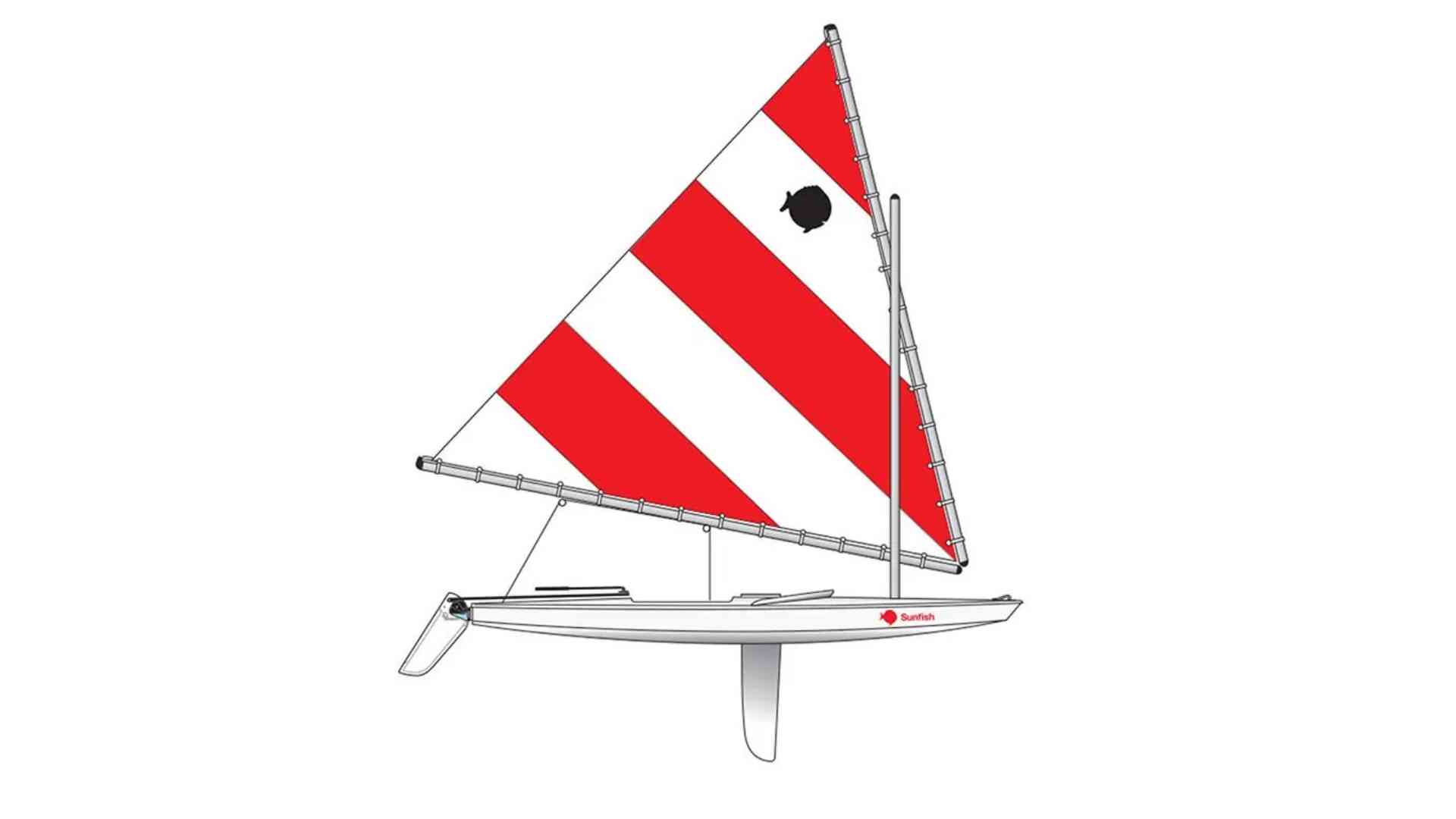
- The mainsheet controls the angle of the sail, affecting your boat’s speed and direction.
- Attach one end of the mainsheet to the aft end of the boom, typically with a bowline knot.
- Thread the other end through the mainsheet block, which is typically attached to the traveler bar on the boat’s cockpit floor.
- Bring the mainsheet line up to the sail’s clew (the lower back corner of the sail) and pass it through the aft grommet (a reinforced hole) in the sail.
- Pull the mainsheet line down, creating tension in the sail. The mainsheet should run freely through the block for easy adjustments while sailing.
- The outhaul adjusts the tension in the foot (bottom) of the sail.
- Attach one end of the outhaul line to the clew of the sail, usually through the outhaul grommet.
- Thread the other end of the outhaul line through the outhaul block or pulley on the boom.
- Adjust the outhaul to your desired sail shape and tension by pulling or releasing the line.
Vang (Optional):
- The vang controls the tension in the leech (back edge) of the sail.
- Attach one end of the vang to the gooseneck fitting on the mast.
- Thread the other end through the vang block on the boom.
- Adjust the vang to control the twist in the sail by pulling or releasing the line.
Cleating Lines:
- Many Sunfish sailboats have cleats to secure lines, allowing for hands-free sailing.
- To cleat a line, simply wrap it around the appropriate cleat and pull it tight. The cleat will hold the line in place.
- To release a cleated line quickly, pull it upward and away from the cleat.
Properly rigging and adjusting these control lines is crucial for sail control and optimizing your boat’s performance. The mainsheet, outhaul, and vang give you control over the sail’s shape, angle, and tension, allowing you to harness the wind effectively while sailing your Sunfish.
Performing Safety Checks Before Setting Sail
Before setting sail on your Sunfish, safety should always be a top priority. Here are some essential safety checks and precautions:
- Buoyancy Check: Ensure that your Sunfish is positively buoyant, meaning it will float even if swamped or capsized. Check for any hull damage or leaks that could affect buoyancy.
- Secure All Lines: Double-check that all lines, including the mainsheet, outhaul, vang, and control lines, are properly secured and free from tangles or knots.
- Equipment Condition: Inspect all equipment, such as the daggerboard, rudder, and sail, to ensure they are in good condition and properly attached., Verify that the mast, boom, and rigging are secure and free from damage or wear.
- Life Jackets: Always wear a Coast Guard-approved life jacket while on the water, and ensure that any passengers also have access to life jackets that fit them properly.
- Safety Guidelines: Familiarize yourself and your passengers with safety guidelines, such as proper body positioning in the boat and what to do in case of capsizing or other emergencies.
- Weather Check: Before heading out, check the weather forecast. Avoid sailing in severe weather conditions, strong winds, or thunderstorms.
- Emergency Gear: Carry essential emergency gear, including a whistle, paddle, bailer, and a means of communication (e.g., a waterproof phone or VHF radio).
- Float Plan: Let someone ashore know your sailing plans, including your intended route and estimated return time. This helps ensure someone is aware of your whereabouts in case of an emergency.
- Boating Knowledge: Ensure you have the necessary knowledge and skills for sailing a Sunfish, especially if you are a beginner. Consider taking a sailing course or sailing with an experienced sailor until you gain confidence.
- Stay Hydrated and Sun-Protected: Bring water to stay hydrated during your sail, especially on hot days., Protect yourself and passengers from the sun with sunscreen, hats, and sunglasses.
By prioritizing safety and performing these pre-sail checks, you can enjoy your Sunfish sailing adventures with peace of mind, knowing that you are well-prepared for a safe and enjoyable experience on the water.
Conclusion and Setting Sail
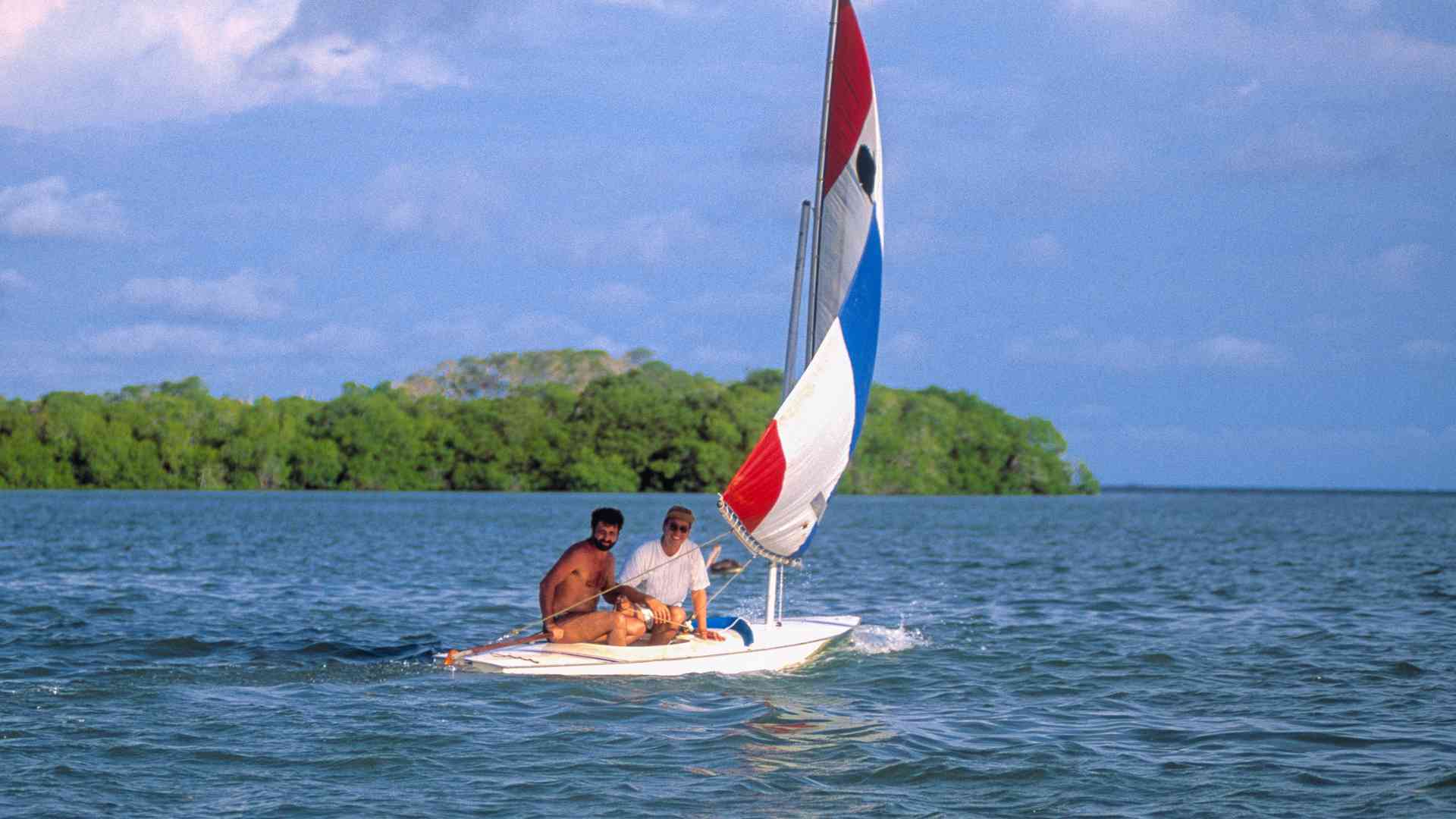
In conclusion, rigging a Sunfish sailboat is a fundamental skill that allows you to embark on exciting sailing adventures. We’ve covered the step-by-step process, from gathering your tools and equipment to performing safety checks before setting sail.
As you gain experience and confidence in rigging your Sunfish, you’ll discover the joy and freedom of sailing. It’s a skill that opens the door to countless adventures on the water, whether you’re exploring new places, racing with fellow sailors, or simply enjoying a peaceful day on the lake.
Remember that practice makes perfect. The more you rig your Sunfish and set sail, the more proficient you’ll become. Over time, rigging will become second nature, and you’ll be able to focus on the pure pleasure of sailing.
So, take these instructions to heart, get out on the water, and enjoy the wind in your sails as you create unforgettable memories aboard your Sunfish sailboat. Sailing offers a lifetime of enjoyment, and rigging your boat is just the beginning of your exciting journey on the water. Happy sailing!
Share How to Rig a Sunfish: Step-by-Step Guide to Sail Away with your friends and Leave a comment below with your thoughts.
Read New Impeller Not Pumping Water: Troubleshoot and Fixing until we meet in the next article.
Similar Posts

How to Buff a Boat: Stepwise Guide to Restore Boat’s Shine
Imagine cruising on the sparkling waters, the sun’s warm rays embracing you, and the wind whispering through your hair. A well-maintained boat can offer this idyllic experience, making it essential for boat owners to keep their vessels in top-notch condition. Among the various maintenance techniques, buffing stands out as a powerful method to restore a…
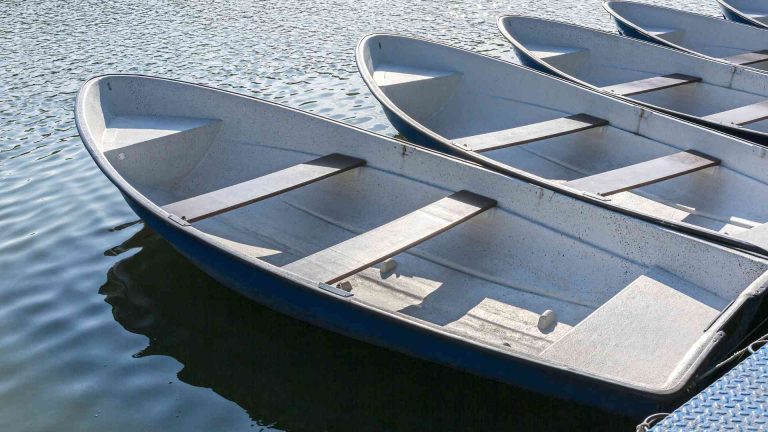
Are Fiberglass Boats Stronger Than Aluminum Boats? Guide
Boating enthusiasts often find themselves pondering a crucial question when considering a boat purchase: Are fiberglass boats stronger than aluminum boats? As the debate continues, it is essential to explore the strengths and weaknesses of each boat material to make an informed decision. Both fiberglass and aluminum boats have gained popularity in the boating world…
![How to Store Fishing Rods in Boat Securely? [Effective Way] How to Store Fishing Rods in Boat Securely? [Effective Way]](https://boatsgeek.com/wp-content/uploads/2023/08/5-74-768x432.jpg)
How to Store Fishing Rods in Boat Securely? [Effective Way]
The tranquil dance of waves, the anticipation of a bite, and the thrill of reeling in a prized catch – fishing encapsulates the essence of serenity and excitement. Yet, amidst the allure of open waters, one crucial element often remains unsung: the art of securing and storing fishing equipment on a boat. The symphony of…

6 Symptoms to Detect a Bad Coil on Your Mercury Outboard
The open water beckons, the sun glints off the waves, and your trusty Mercury outboard roars to life… or at least, it tries to. But instead of a satisfying purr, you’re greeted by a sputter, a cough, and maybe even a pathetic backfire. What’s wrong? It could be a bad coil lurking in the shadows,…

Ferry Boat in Salvador: Setting Sail to Transportation
Salvador, the capital of the Brazilian state of Bahia, boasts a rich history, vibrant culture, and stunning beaches. But did you know this captivating city also relies heavily on ferries for transportation? Salvador’s ferry network connects the mainland to Itaparica Island, a popular tourist destination known for its pristine beaches, laid-back vibes, and historical charm….
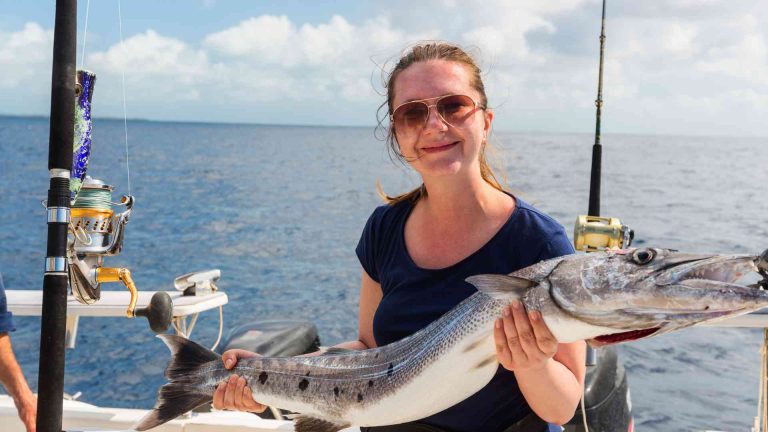
Catch and Release Fish: 7 Effective Strategies for Boaters
The gentle sway of the water, the thrill of the chase, and the triumphant moment when a fish takes the bait—there’s something magical about fishing from a boat. Yet, amid this timeless pursuit, lies a responsibility that echoes through the ripples of the water and reverberates within the heart of every angler. It’s the responsibility…

~ Back to One Design Main Page ~
× You are using an outdated browser. Please upgrade your browser to improve your experience.

Shopping Cart
Your cart is currently empty., spars & parts.

Sunfish Quick Release Gooseneck Adjuster

Sunfish Sail Rings

Sunfish Gooseneck Assembly

Sunfish Mast Base Cap

Sunfish Mast

Sunfish Mast Top Cap

Sunfish Boom Eyestrap

Sunfish Boom Cap Without Eye

Sunfish Boom Cap With Eye

Sunfish Boom Block

Sunfish Swivel Boom Block

Sunfish Interlocking Eyebolt
Copyright © 2024 Dinghy Shop. | Ecommerce Shopping Cart Software by Miva, Inc.

- O’pen Skiff Purchase Page
- ILCA – Element 6
- RS Sailboats
- Sunfish – Recreational
- Sunfish – Race Version
- Sunfish Sails
- LaserPerformance Sunfish Parts Price List
- 420 – Zim Sailing
- Finding the Right Laser Rig: Formula
- Racks by Dynamic Dollies and Racks
- Load Rite Trailers
- Load Rite Sunfish Trailer
- **NEW** LoadRite for Sailboats
Sunfish Dolly by Dynamic
- Optimist Dolly by Dynamic
- How to Apply Laser Sail Numbers
- Applying Laser Sail Numbers
- North Sails for LaserPerformance Dinghies
- About/Contact
Sunfish lower recreational boom
Share this:.
- Click to email this to a friend (Opens in new window)
- Click to share on Facebook (Opens in new window)
- Click to share on Twitter (Opens in new window)
- Click to print (Opens in new window)
- Click to share on Pinterest (Opens in new window)
- Click to share on LinkedIn (Opens in new window)
- Click to share on Tumblr (Opens in new window)
- Click to share on Reddit (Opens in new window)
Description
- Reviews (0)
There are no reviews yet.
You must be logged in to post a review.
Related products

60mm Harken Ratcheting Block

Sunfish lower mast cap with fasteners
Sunfish upper recreational boom.
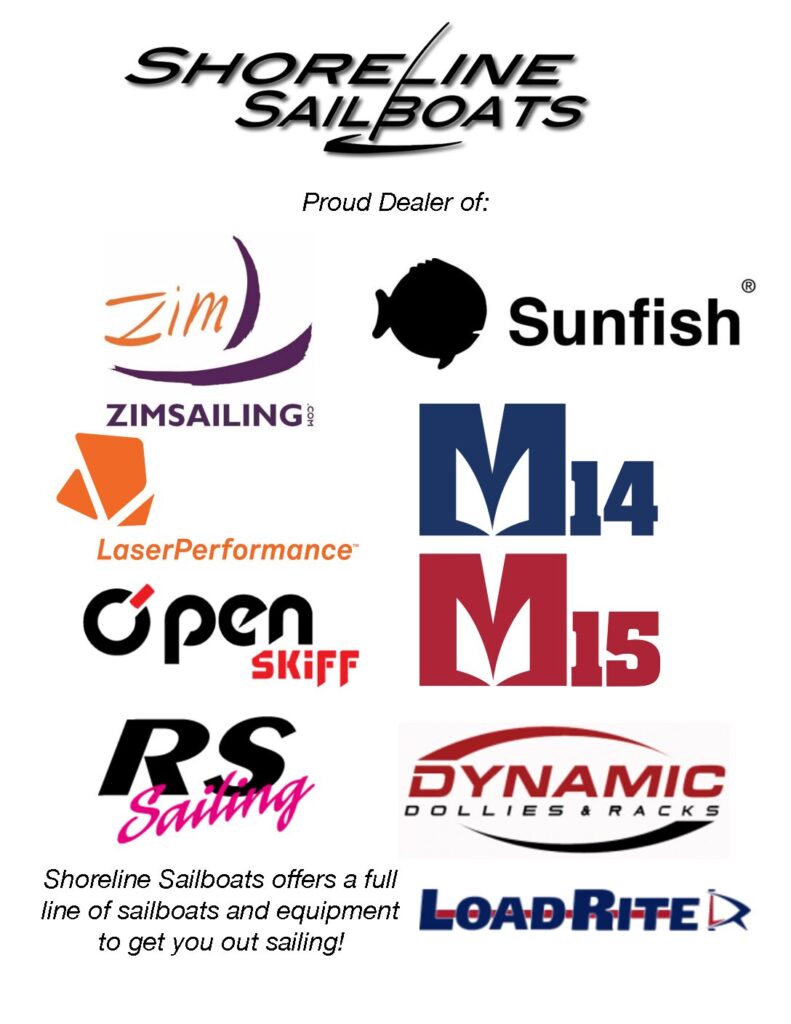
THE MELGES 15!
THE ROCKET! Built in the USA
SUNFISH – SAIL A CLASSIC!
Recent Posts

Hours & Info
Search products.
Contact us:
Any questions about the sailboats we sell, or the services we provide? We’re always eager to talk sailing and would enjoy helping you with any of your sailing needs. Contact Us
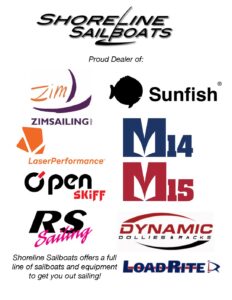
Designed by WPZOOM

Learn How to Sail a Sunfish Sailboat with Expert Tips and Techniques
Alex Morgan
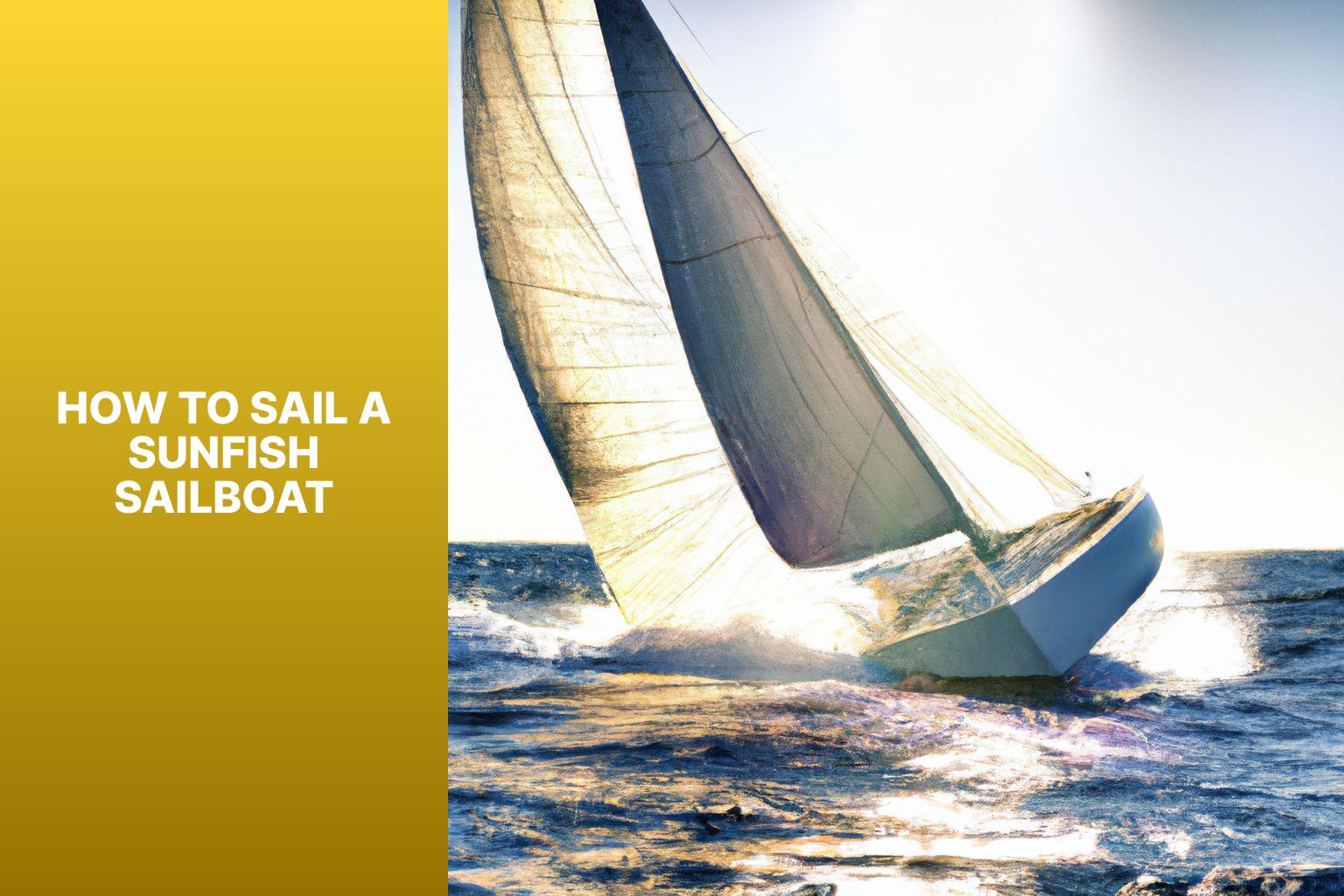
Sailing a Sunfish sailboat can be an exciting and enjoyable experience for both beginners and experienced sailors. Known for their simplicity and versatility, Sunfish sailboats are popular for recreational sailing and racing. If you’re looking to learn how to sail a Sunfish sailboat, this guide will provide you with the basic knowledge and steps to get started.
We’ll begin by introducing you to the Sunfish sailboat and why it’s a great choice for sailing. Then, we’ll cover the basic parts and terminology of a Sunfish sailboat, followed by the necessary preparations before hitting the water. We’ll delve into the step-by-step process of sailing a Sunfish sailboat, including rigging, boarding, wind awareness, sailing maneuvers, and sail control. We’ll provide safety tips to ensure a safe and enjoyable sailing experience, along with common mistakes to avoid.
By the end of this guide, you’ll be equipped with the fundamental knowledge and skills to confidently sail a Sunfish sailboat.
Key takeaway:
- Learning to sail a Sunfish sailboat allows for an exciting and rewarding experience on the water.
- By understanding the basic parts and terminology of a Sunfish sailboat, beginners can become familiar with the equipment needed for sailing.
- Preparing for sailing by checking weather conditions and ensuring the equipment is in proper condition is essential for a safe and enjoyable sailing experience.
What is a Sunfish Sailboat?
A Sunfish sailboat is a small, single-handed sailing dinghy popular for recreational and competitive sailing.
What is a Sunfish Sailboat ? It is designed to be simple and easy to maneuver, making it ideal for beginners and experienced sailors.
The Sunfish sailboat has a unibody construction with a cockpit for the sailor and a single triangular sail.
It is lightweight and has a shallow draft, allowing it to sail in various conditions, including calm lakes and open waters.
The Sunfish is known for its stability and responsiveness, enabling sailors to navigate through waves and make quick turns.
It is easy to rig, launch, transport, and store due to its simplicity and compact size.
Fact: Introduced in 1952, the Sunfish sailboat has become one of the world’s most popular sailboat designs. Over 300,000 boats have been sold worldwide.
Why Learn to Sail a Sunfish Sailboat?
- Fun: Learning to sail a Sunfish sailboat can provide a thrilling and exhilarating experience on the water. Glide through waves, harness the power of the wind, and experience joy and freedom.
- Physical activity: Sailing a Sunfish sailboat requires using your muscles to steer, control the sail, and adjust the rigging. It can improve your overall fitness.
- Developing sailing skills: Sailing a Sunfish sailboat helps cultivate sailing skills like understanding wind patterns, mastering maneuvers, and improving boat handling abilities. These skills are valuable for recreational and competitive sailing.
- Connecting with nature: Being on the water and amidst nature brings peace and tranquility. Sailing a Sunfish sailboat allows you to observe wildlife, enjoy breathtaking views, and connect with the elements.
- Building confidence: Learning to sail a Sunfish sailboat boosts confidence and self-esteem as you develop new skills and overcome challenges.
- Bonding with others: Sailing is a social activity, offering quality time with family, friends, and fellow sailing enthusiasts. Collaborate as a team to operate the sailboat and create lasting memories.
Basic Parts and Terminology of a Sunfish Sailboat
Get ready to set sail as we dive into the world of Sunfish sailboats! In this section, we’ll uncover the essential parts and terminology that every sailor should know. From understanding the hull to exploring the mast and boom, and getting familiar with the rigging, we’ll equip you with the knowledge you need to navigate the waters with confidence. So, grab your life jacket and let’s explore the fascinating components that make up a Sunfish sailboat.
Understanding the Hull
When learning to sail a Sunfish Sailboat , it’s crucial to have a deep understanding of the hull . The hull, made from lightweight and durable fiberglass , allows the sailboat to effortlessly glide through the water. Its “ V ” shape ensures a smooth glide, reducing drag and enabling the sailboat to reach maximum speed. The hull is divided into sections, including the bow and stern , which aid in steering and maneuverability.
Sailors will find comfort in the hull’s spacious cockpit , where they can sit or stand while sailing. This cockpit provides easy access to the sail and rigging , facilitating smooth sailing. The hull may boast additional features such as storage compartments for equipment and a drain plug to remove any excess water.
Understanding the intricate workings of the hull is crucial for safely navigating a Sunfish Sailboat. It empowers sailors to have full control over the sailboat’s direction, make necessary adjustments, and confidently tackle various weather conditions. Therefore, becoming familiar with the hull is not just important but an essential step towards becoming a proficient sailor.
Exploring the Mast and Boom
The mast and boom are crucial components of a Sunfish sailboat that play a vital role in controlling the sail and maneuvering the boat. Let’s delve into their features and functions:
– Mast : The mast is a tall pole crafted from lightweight materials such as aluminum or fiberglass. It offers vertical support to the sail and holds it in place. The mast is inserted into a mast step on the boat’s deck. It can be raised or lowered by utilizing a halyard, which is a line connected to the sail. Sail control lines like the main sheet and boom vang are attached to the mast to ensure efficient control.
– Boom : The boom is a horizontal spar that extends from the mast towards the rear of the sailboat. It aids in controlling the position of the sail by enabling it to move back and forth based on the wind direction. The boom is attached to the mast at the gooseneck, allowing it to pivot upwards and downwards. Its position is regulated by adjusting the outhaul, which is a line responsible for controlling its extension or retraction. The boom serves as a rigid lever that distributes the force of the wind evenly across the sail.
Understanding the mast and boom is essential to effectively control the sail and navigate the Sunfish sailboat. By mastering their functions, sailors can optimize the performance of the boat by adjusting the sail’s position and shape according to the prevailing wind conditions.
Getting Familiar with the Rigging
When familiarizing with the rigging of a Sunfish sailboat, it’s important to understand the parts and their functions. Here’s a helpful list:
By familiarizing with these rigging components, you’ll be prepared to operate a Sunfish sailboat and enjoy sailing.
Fun Fact: The Sunfish sailboat was designed in 1952 by Alexander Bryan and has since become one of the most popular recreational sailboats worldwide. Its simplicity, durability, and versatility make it a favorite among sailors of all skill levels.

Preparing for Sailing
Preparing to set sail on a Sunfish sailboat involves two crucial aspects: checking the weather conditions and ensuring all equipment is ready. Weather conditions play a pivotal role in determining the success and safety of your sailing adventure. Having your equipment meticulously prepared and in optimal condition is essential for a smooth and enjoyable experience . Let’s dive into these sub-sections and uncover the tips and tricks that will help you navigate these preparations like a seasoned sailor .
Checking the Weather Conditions
When preparing to sail a Sunfish sailboat, it is important to check the weather conditions beforehand. This ensures the safety and smooth sailing of your experience. Here are a few factors to consider:
Wind speed: Determine the current wind speed, as it directly impacts your sailing experience. Check the forecast or use a windometer for an accurate reading. Ideally, a moderate wind speed of 5-15 knots is best for sailing a Sunfish sailboat.
Wind direction: Understand the wind’s direction, as it determines your course and maneuverability on the water. Plan your sailing route accordingly, considering obstacles or hazards.
Temperature and weather conditions: Note the temperature and general weather conditions. Extreme weather like thunderstorms or high winds can be dangerous for sailing. Ensure the weather is suitable and safe.
Tides and currents: If sailing in an area with tides or currents, check tide tables or current charts to understand water movements. This helps you plan your sail and avoid unpredictable or hazardous conditions.
By checking the weather conditions before setting sail, you ensure a safer and more enjoyable experience on your Sunfish sailboat. Always prioritize safety and adjust plans based on weather conditions.
Preparing the Equipment
When preparing to sail a Sunfish sailboat , follow these steps to ensure your equipment is ready:
1. Check the condition of the sail, mast, boom, and rigging for damages or issues.
2. Have necessary safety equipment on board, such as life jackets, a whistle, and a first aid kit .
3. Inspect the rudder and tiller to ensure proper functioning and secure attachment.
4. Check the hull for cracks or leaks, and make necessary repairs before setting sail.
5. Ensure the daggerboard is in good condition and properly attached to the boat.
6. Check all ropes, lines, and cleats for good condition and proper connection.
By following these steps, you can ensure that your equipment is in working order and ready for a safe sailing experience on a Sunfish sailboat.
The Sunfish sailboat was designed in 1952 by Alcort, Inc. It gained popularity for its simplicity and ease of use. Originally intended for recreational sailing, it has become a popular choice for racing as well. The design has remained largely unchanged over the years, with minor modifications for improved performance and durability. Today, the Sunfish sailboat is beloved by sailors of all skill levels for its versatility and timeless design.
Steps to Sail a Sunfish Sailboat
Get ready to embark on an exciting and adventurous journey as we uncover the step-by-step process of sailing a Sunfish sailboat . From rigging the sailboat to mastering wind awareness and steering, we’ll cover it all. We’ll also explore the art of sailing maneuvers and controlling the sail, ensuring you have the skills to navigate the open waters with ease. So, grab your sailing gear and let’s dive into the world of Sunfish sailboat sailing!
1. Rigging the Sailboat
To rig a Sunfish sailboat, proper steps must be followed . First, attach the mast to the mast step using a mast step plug. Then, use the boom vang to attach the boom to the mast. Next, slide the luff of the mainsail into the mast groove and secure the tack to the boom. Hoist the mainsail by pulling up on the halyard line and adjust the tension for the sail shape. Control the sail angle by attaching the sheet to the eye strap at the back of the boom. Make sure to adjust the outhaul to control the tension of the bottom of the sail. Check the tension of the halyard, vang, and downhaul ropes for proper sail shape and control. Before sailing, it is crucial to ensure all lines and fittings are secure and properly fastened. Rigging the sailboat correctly is essential for optimal performance and control on the water.
2. Boarding the Sailboat
To board a Sunfish sailboat, follow these steps:
1. Boarding the Sailboat : Approach the sailboat from the side or stern, ensuring stability.
2. Boarding the Sailboat : Step onto the centerboard or daggerboard, placing one foot at a time while balancing your weight.
3. Boarding the Sailboat : Carefully lower yourself onto the deck, keeping a firm grip on the gunwale for support.
4. Boarding the Sailboat : Once on the deck, find your balance and position yourself towards the front of the cockpit, facing the bow of the boat.
5. Boarding the Sailboat : Hold onto the hiking straps or grab rail for stability as you prepare to set sail.
Boarding a sailboat can be challenging, especially for beginners. Approach the boat with caution and use proper technique for a safe and stable entry. By following these steps, you’ll be ready to embark on your sailing adventure on a Sunfish sailboat. Always wear a life jacket and be mindful of your surroundings for safe sailing.
3. Getting into Position
To successfully get into position for sailing a Sunfish sailboat , follow these steps:
- Stand at the boat’s side, facing the bow.
- Grab the edge of the cockpit with one hand for stability.
- Step your other foot into the cockpit, maintaining balance.
- Slowly lower yourself into the cockpit, keeping your weight centered.
- Sit comfortably with a straight back and feet stretched out in front.
- Hold the mainsheet and tiller to control the sailboat.
Pro-tip: Before getting into position, ensure the sailboat is stable and properly balanced to prevent accidents or tipping over while sailing. Adjust your position as needed when the wind and waves change for stability and control of the Sunfish sailboat .
4. Wind Awareness and Steering
To effectively navigate a Sunfish Sailboat and develop wind awareness and steering proficiency, follow these steps:
1. Position yourself: Stand or sit on the boat’s centerline, maintaining balance.
2. Observe wind direction: Look at flags, waves, and ripples on the water to determine wind direction. Pay attention to nearby boats.
3. Feel the wind on your face: Allow the wind to guide your understanding of its strength and direction.
4. Point into the wind: Steer your boat toward the wind to sail upwind or “close-hauled.” Adjust the sail to catch the wind.
5. Release the sail: When sailing downwind, ease the sail to allow the wind to fill it from behind.
6. Adjust sails for optimal power: Make small adjustments to the sail position while sailing on different points of sail, such as reaching and running, to maximize speed and control.
7. Use body weight: Shift your body weight to maintain balance and stability as you adjust the sail and steer the boat through changing wind conditions.
8. Practice steering: Use the tiller to turn the boat in the desired direction. Push the tiller away from you to turn away from the wind, and pull it towards you to turn towards the wind.
9. Avoid excessive steering: Minimize abrupt or excessive steering movements, as they can slow down the boat and make it less stable.
By incorporating wind awareness and mastering steering techniques, you will enhance your ability to navigate a Sunfish Sailboat with proficiency and control.
5. Sailing Maneuvers
- 5.1 Tacking: Tacking, one of the sailing maneuvers, is a technique that changes the sailboat’s direction by turning the bow through the wind. By pushing the tiller away from you and pulling the sail towards the center of the boat, you can execute this maneuver and sail against the wind.
- 5.2 Jibing: Jibing, another sailing maneuver, is a technique that changes the sailboat’s direction by turning the stern through the wind. To perform this maneuver, pull the tiller towards you and adjust the sail to the opposite side of the boat, allowing the sailboat to change course and sail with the wind.
- 5.3 Tacking or Jibing around a buoy: When participating in a race or navigating around a buoy, tacking or jibing around the buoy is a crucial skill to master. This maneuver, requiring precise timing and coordination between the skipper, crew, and wind conditions, allows you to change the sailboat’s direction while rounding the buoy.
- 5.4 Gybing: Gybing, one of the sailing maneuvers, is a technique used to change the sailboat’s direction when sailing downwind. By swinging the stern through the wind, you can execute this maneuver. It is crucial to exercise careful control of the sail and tiller to avoid any accidents.
- 5.5 Heaving to: Heaving to is a sailing maneuver that allows you to stop or slow down a sailboat while maintaining some control over the sail. By positioning the sail and rudder, you can remain stationary or drift in a controlled manner, making this technique an essential skill to learn.
These sailing maneuvers, referred to as 5. Sailing Maneuvers, are of utmost importance in mastering the art of sailing a Sunfish sailboat. To become a skilled sailor and experience the freedom and excitement of sailing, it is recommended to practice these maneuvers in various wind conditions.
6. Controlling the Sail and Adjusting the Rigging
To master the art of controlling the sail and adjusting the rigging of a Sunfish sailboat, follow these steps:
1. Familiarize yourself with the lines and controls on the boat.
2. Properly adjust the boom vang to control sail tension. Excess tension reduces speed, while insufficient tension causes the sail to luff.
3. Check and adjust the mainsheet to control the sail’s position. Tightening the mainsheet increases speed, while loosening it depowers the sail.
4. Adjust the cunningham to control tension at the front of the sail. Tightening it flattens the sail for better efficiency in stronger winds.
5. Monitor the traveler to control the horizontal position of the boom. Adjusting the traveler helps control the sail’s angle and optimize its shape for different wind conditions.
6. Pay attention to the downhaul to control tension in the lower part of the sail. Adjusting the downhaul helps control the sail’s depth and performance.
7. Practice and experiment with different settings to find the optimal sail and rigging adjustments for various wind conditions and sailing maneuvers.
By mastering the art of controlling the sail and adjusting the rigging, you can maximize the performance of your Sunfish sailboat and have a more enjoyable sailing experience.
Safety Tips for Sailing a Sunfish Sailboat
When sailing a Sunfish sailboat, it is important to prioritize safety. Follow these safety tips to ensure a smooth and secure sailing experience:
- Always wear a life jacket while on the water to enhance your safety.
- Prior to setting sail, check the weather forecast to avoid encountering hazardous storms or strong winds.
- To ensure optimal performance, inspect the boat and its equipment before every sail to confirm their proper functionality and condition.
- Stay vigilant and fully aware of your surroundings while sailing. Constantly watch for other boats, obstacles, and any changes in the conditions.
- If you are a beginner, consider taking sailing lessons to acquire the essential techniques and skills for handling the Sunfish sailboat correctly.
- Be mindful of the possibility of capsizing and practice how to right the boat and get back in safely.
- In order to prevent potential accidents, maintain a safe distance from swimming areas and other water activities.
- For emergencies or the need to seek help, bring a communication device, like a waterproof phone case or a marine radio .
- Prior to sailing, inform someone on land about your plans, including your estimated return time and location , as an additional safety precaution.
- Always prioritize safety, trust your instincts, and use common sense while sailing.
Common Mistakes to Avoid
When sailing a Sunfish sailboat, it is important not to make the common mistake of failing to secure the daggerboard. This can result in instability and difficulties in controlling the boat.
Another common mistake to avoid is forgetting to check the wind direction before setting sail. Having knowledge of the wind direction is crucial in adjusting the sails and navigating effectively.
Incorrectly trimming the sails can lead to poor performance and a loss of speed. It is essential to trim the sails properly according to the wind conditions in order to maximize speed and control.
Overloading the boat with excessive weight can negatively impact its stability and maneuverability. It is important to adhere to the recommended weight limits and distribute the weight evenly to maintain balance.
It is a serious mistake to ignore safety precautions such as not wearing a life jacket or disregarding other safety measures. Safety should always be a top priority while sailing, and all necessary safety measures should be followed.
Some Facts About How To Sail A Sunfish Sailboat:
- ✅ The Sunfish is a small, one-person single sail boat that is popular for sailing at summer camps and introducing people to the joy of sailing.
- ✅ The Sunfish features a flat, boardlike hull and a crab claw sail mounted to an un-stayed mast.
- ✅ It is easy to learn to sail a Sunfish, with many people being able to do so in a day through trial and error.
- ✅ Lessons are recommended for those who want to learn to sail a Sunfish.
- ✅ The Sunfish has become extremely popular, with a quarter million sold worldwide as of 1995.
Frequently Asked Questions
How do i install the sunfish sailing web app on my home screen.
To install the Sunfish Sailing web app on your home screen, you need to use the built-in Safari browser. Simply follow these steps:
1. Open Safari on your device. 2. Navigate to the Sunfish Sailing website. 3. Tap the Share button at the bottom of the Safari screen. 4. Scroll down and tap “Add to Home Screen”. 5. Customize the name of the app if desired, then tap “Add”. 6. The Sunfish Sailing web app will now be installed on your home screen.
What is a sail plan and how does it affect a sailboat?
A sail plan refers to the arrangement and size of a sailboat’s sails. It plays a crucial role in determining the boat’s performance, speed, and control. The sail plan, along with the hull design, creates lift forces that propel the sailboat through the water. By adjusting the sail plan, such as the position and angle of the sails, sailors can optimize the balance of forces and improve the boat’s performance.
Are there any YouTube videos available for learning to sail a Sunfish?
Yes, there are YouTube videos available for learning to sail a Sunfish. While videos can provide some guidance, it is recommended to take a class or lessons to learn the basics of sailing a Sunfish. Hands-on instruction and guidance from experienced instructors can greatly help in developing proper sailing techniques and ensuring a safer and more enjoyable sailing experience.
What is a stopper knot and why is it important in Sunfish sailing?
A stopper knot is a knot tied at the end of a rope or halyard to prevent it from pulling out while on the water. In Sunfish sailing, a stopper knot is recommended to secure the halyard, which raises and lowers the sail, to prevent it from accidentally coming undone. It helps ensure proper control over the sail and prevents any mishaps or accidents while sailing.
Do recreation departments offer sailing classes during the summer?
Yes, many recreation departments offer sailing classes specifically during the summer season. These classes are designed to introduce individuals to the fundamentals of sailing and provide them with the necessary skills and knowledge to sail small boats like the Sunfish. Participating in these classes can be a great way to learn and develop a passion for sailing in a structured and supervised environment.
Can a Sunfish sailboat be launched from anywhere with water access?
Yes, a Sunfish sailboat can be launched from various locations with water access. Whether it is from the beach, a dock, or any other suitable waterfront area, the lightweight and easily maneuverable nature of the Sunfish make it convenient for launching and sailing in different water environments. It is important to always consider safety precautions and adhere to local rules and regulations when launching and sailing the boat.
About the author
Leave a Reply Cancel reply
Your email address will not be published. Required fields are marked *
Save my name, email, and website in this browser for the next time I comment.
Latest posts

The history of sailing – from ancient times to modern adventures
History of Sailing Sailing is a time-honored tradition that has evolved over millennia, from its humble beginnings as a means of transportation to a beloved modern-day recreational activity. The history of sailing is a fascinating journey that spans cultures and centuries, rich in innovation and adventure. In this article, we’ll explore the remarkable evolution of…

Sailing Solo: Adventures and Challenges of Single-Handed Sailing
Solo Sailing Sailing has always been a pursuit of freedom, adventure, and self-discovery. While sailing with a crew is a fantastic experience, there’s a unique allure to sailing solo – just you, the wind, and the open sea. Single-handed sailing, as it’s often called, is a journey of self-reliance, resilience, and the ultimate test of…

Sustainable Sailing: Eco-Friendly Practices on the boat
Eco Friendly Sailing Sailing is an exhilarating and timeless way to explore the beauty of the open water, but it’s important to remember that our oceans and environment need our protection. Sustainable sailing, which involves eco-friendly practices and mindful decision-making, allows sailors to enjoy their adventures while minimizing their impact on the environment. In this…
SUNFISH AND LASER SAILBOATS
The Sunfish is a sailing icon. One of sailing’s best-known brands, it is unmatched in simplicity and performance making it popular for all ages and abilities. Designed as the ultimate beach craft, this maintenance free boat holds its resale value thanks to its robust construction, highlighted by hard chines and a flat underbody. The Sunfish can be stored almost anywhere and is a snap to car-top, making it a popular international class and easy to transport to your favorite beach for family fun.
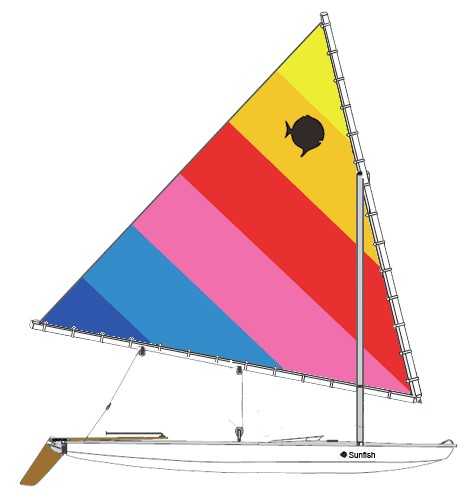
- Fiberglass hull
- Fiberglass foils
- Aluminum spars
- Class legal sail Lightweight hull
- Kick-up rudder system
- Self-bailing cockpit
- Storage compartment in the cockpit
The Laser is the world’s most popular adult racing class boat. True to box one-design standards, each Laser in the world is identical ensuring the best sailor on the water wins the race, not the boat. The Laser is a challenging boat that rewards athleticism, subtle steering and trimming techniques, as well as the tactical excellence of the sailor. The Laser is raced by young and old alike from the Club level all the way to the Olympics. The Laser comes standard as a race version.
- Ice Blue Fiberglass hull
- Harken Race upgrade Cunningham/Outhaul kit
- Harken Race upgrade Boom Vang / Kicker
- Gorilla tiller and extension
- Class legal Mark II sail
- 60mm Harken ratchet block
- Padded toe strap

Stop in and take a look at our available Sunfish and Lasers.
How to Rig a Sunfish Sailboat

Table of Contents
“As an Amazon Associate I earn from qualifying purchases at no additional cost to you”
The Sunfish is arguably the most popular sailboat on the planet. Its popularity is characterized by its inexpensive price, easy portability (probably the only car-toppable sailboat), and easy to rig and sail with just one control line.
But our focus today is on one critical part – how to rig a sunfish. If you just bought your first Sunfish sailboat, sit back and read through this complete step-by-step guide of rigging this kind of dinghy . I hope you already know the parts of a dinghy but if not, well, that’s a topic for another day.
And off we go:
1: Point the sailboat’s bow into the wind. Why? To keep the sail over the Sunfish when it is raised. This will avoid hitting other people or boats with the booms and make it easier to affix the mainsheet.
2: Lay the spars and sail on the sailboat with the mast ring toward the bow.
3: Untie the sail/spar bundle knot and pull the line to undo the bundle. The spars and sail are usually bundled using the mainsheet and halyard.
4: Attach the Boom Sling. Find a spot around fifteen inches below where your halyard meets the upper boom. Pull one side of the Boom Sling around the upper boom and the halyard. Pull the line through the loop to capture the halyard and upper boom. Now, pull the other end of the line to where the lower boom and upper boom meet, and slide the loop over the end of the boom and into the notch formed by the bolt joining the booms.
5: Properly align the mast and boom. Make sure the boom is on the port side of the mast.
6: Ensure the halyard is running directly from the upper boom to the top of the mast and through the hole at the top of the mast.
7: Be sure that the sail is lying towards the port side of the sailboat, and that the mainsheet isn’t wrapped around anything, but just lying below the lower boom.
8: Align the mast, lower and upper booms so that the mast ring is directly over the mast step.
9: Raise the mast and gently place it in the mast step in the deck. Don’t forget to keep hold of the halyard and make sure it’s running neatly through the masthead fairlead from the back to the front.
10: Guide the end of the halyard via the fairlead to starboard of the mast.
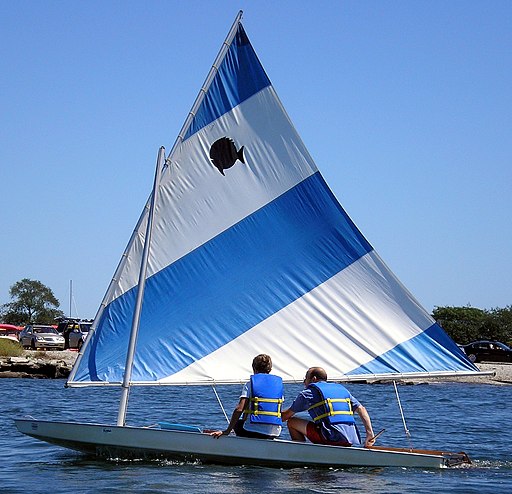
11: Pull the halyard to raise the spar and the sail. Reach down and lift the gooseneck ring so the sail can go all the way to the top of the mast.
12: Tie a cleat hitch in the halyard around 2ft above the cleat and then feed the halyard tail through the cleat hitch and bring it down to fit over the cleat. This helps secure the sail.
13: Ensure the mainsheet runs through all the available sleeves on the boom to stop it from hanging down and catching your neck during tacks and gybes. Tie a cleat knot preferably a figure 8 around the cleat and secure the final turn with an extra twist.
14: Lead the excess halyard tail through the deck fairlead, over the gooseneck and back via the fairlead. Pushing the lower spar down a bit while holding onto the halyard tightly will restrict the spar from rising in harsh winds.
15: Tie another cleat knot on the deck. This one is crucial just in case you capsize as it will keep the sail from falling off the sailboat and sinking. You can tie the extra halyard to the junction of the upper and lower spars with a bowline.
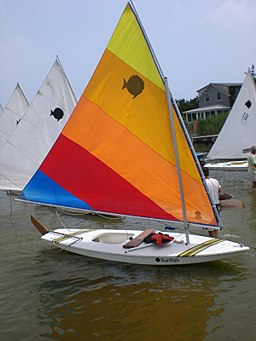
16: Now, run the mainsheet through the ratchet block at the front of the cockpit. Keep in mind that the block only runs in one direction, so be sure to check that first. Tie a stopper knot or figure 8 at the end of the sheet so that it doesn’t get away while you sailing.
17: Tie the other end of the mainsheet to the bridle with a bowline.
18: Fasten the bungee cord affixed to the daggerboard around the mast and then clip it to itself. This is to ensure that the daggerboard stays in the sailboat, as well as supply tension to hold the daggerboard in a partially raised position.
19: Attach the rudder and put the centerboard in its place.
20: Jump in, launch, and go sailing!
And that’s it as far as rigging a Sunfish sailboat is concerned. A piece of advice here is that you need to know at least three types of knots to successfully rig a sailboat: a cleat hitch, a stopper knot or figure 8, and a bowline .
Before you go, let me answer a few frequently asked questions about Sunfish sailboats.
How much is a sunfish sailboat?
A new Sunfish sailboat will set you back at least $4,500 while a used one in good condition will usually fall in the range of $900 to $1,200.
In the case of used boats, there are few things to be keen on. Firstly, a decent used boat should have a smooth hull, uniformly firm with no soft areas, and without deep imperfections or holes.

from PxHere
Secondly, the sailboat ought to be dry sailed, meaning it must have been stored on land, off the ground, and under proper shelter throughout the time when it was not being used. The reasoning behind this is that boats left in water or carelessly stored gain weight quickly, and weight is something you want to keep at a minimum when sailing. I won’t recommend a used Sunfish for competitive sailing unless it’s within a few kilograms of the weight of a new one.
How fast can a sunfish sailboat go?
Now, let’s first be clear that ‘fast’ is always relative because different factors come into play to determine how fast you can go. For instance, a general rule of thumb has it that a lighter boat sails faster than a heavy one. Also, a longer sailboat will record a higher maximum speed than a shorter boat.
What’s more? Boats tend to sail slower in cold waters than in warm waters, and shallow waters decrease boat speed too as the vessel sinks more and has to displace more water out of its way.
Another thing to remember is that Sunfish sailboats are casual-style boats, and so you might want another option if you’re after the need for speed. All in all, a sunfish sailboat can clock 11 knots in favorable conditions. Keep in mind that the official Laser sailboat speed record is 16.8 knots, and Lasers tend to be faster than Sunfish.
How heavy is a sunfish sailboat?
A new Sunfish is typically 120 pounds (54kg).
How to transport a Sunfish sailboat?
Nearly all Sunfish sailboats are cartoppable, thanks to their small and lightweight designs. Simply install the right equipment on the top of your car, such as roof rack and straps, and you’ll find it a doddle transporting your Sunfish. Alternatively, you can buy a trailer and it will save you the work of loading and taking down your sailboat.
How to clean a sunfish sailboat?
Now there’s no formula on how to clean a Sunfish sailboat or any sailboat for that matter. But let me give a few tips on how I do it. I realized that beginning from the topmast to the sails and down to the keel is pretty efficient. Be sure to use non-harmful detergents too.
To clean the sail, first set it down on a clean, flat area. Add some liquid detergent into a bucket of warm water and brush the sail gently to remove debris. You can also clean the sail with your hands, though this process is time-consuming.
As for the hull, I tend to use a pressure washer with a gentle nozzle to remove the worst of the dirt. I then mix a bucket of water and laundry detergent and wash the entire hull using a scrubber or kitchen sponge. Next up is rinsing the whole thing using a clean sponge and plenty of clean water after which I let it dry. Note that your hull (especially fiberglass) might require extra maintenance depending on how dirty and greased it is. Perhaps an extra polish or wax to keep looking nice.
The mast and boom can always do with some scrubbing with soapy water and giving them a good rinse. Bleach can be used to remove tough stains such as mildew.
To cut a long story short, most cleaning involves the use of soapy water, a mild detergent, and a sponge. Just make sure to follow instructions as per the cleaner of your choice.
The Sunfish sailboat is loved by all and the small matter of how to rig a Sunfish is now done and dusted. When the wind is good, just take to the water and have fun zipping about. If you have any additional questions or feedback, feel free to leave a comment below.

PS: Interested in the best drysuits for dinghy sailing ? Check out our guide here!
Happy sailing!

Bill is an ISA Sailing & Powerboating Instructor in Ireland. He writes about all things sailing.
Related Articles that might be of interest to you:

The 5 Best Sailing Watches [Expert Review]
“As an Amazon Associate I earn from qualifying purchases at no additional cost to you” Best Sailing Watch A sailing watch is quite different from a regular timepiece. They are more than a fashion accessory. A good sailing watch is a combination of durability and functionality. Apart from the

How to Reinforce a Fiberglass Boat Transom
“As an Amazon Associate I earn from qualifying purchases at no additional cost to you” A well-functioning transom ensures that fiberglass boats, especially outboards, can support the weight of the motor and other equipment. Boats with wet transoms encourage wood rot, which further affects the performance of the boat. A

The 5 Best Shoes for Dinghy Sailing – Expert’s Guide
“As an Amazon Associate I earn from qualifying purchases at no additional cost to you” Answering the call of adventure by dinghy sailing requires you have all the right equipment at hand. You cannot go dinghy sailing with a pair of office shoes; you need proper water shoes that work
Leave a Comment Cancel Reply
Your email address will not be published. Required fields are marked *
- Techniques & Guides
- Yacht Equipment
- Personal Gear
Made by Dancing Data.
Disclosure . Terms and Conditions . Privacy Policy

- Sign in or Create an account
- CALL 8054796122
- © 2024 SLO Sail and Canvas Store powered by Bigcommerce
- Boat Covers
- Catamaran Trampolines
- By Boat Type
- Accessories
- Government/Commercial
- Boat Cover Care and Cleaning Guide
- COVID-19 Information Page
- Production Sewist and Prep Assistant Wanted - Boat Cover Department
- Boat Cover Styles
- Custom Work
- Directions To Our Shop
- How-To Videos
- Manufacturing
- Shipping & Returns
Sunfish ® Spar Bag
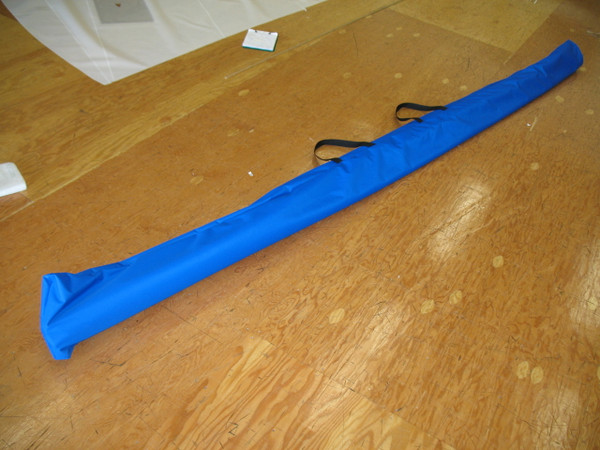
- I have read the item description and agree to the stated build lead time. I understand that everything is built-to-order.
Product Description
This is a Spar Bag for Sunfish® sailboat.
The bag is generously sized to hold the mast, boom, and upper boom, with the sail attached for the Sunfish® sailboat. The bag can be built in any of our three stock cover fabrics (fabric and color can be chosen to match your boat cover) and includes two webbing carry handles and a drawstring end. This bag has a finished length of 176" and a circumference of 29".
You may find this bag will work perfectly for many of the Clone-Fish out there too.
We also offer a fancier Sunfish Spar Bag - Zippered that is closed on both ends with a full length zipper down the entire bag.
Additional Info:
Click here to see the different types of covers that we build with photos and descriptions.
CLICK HERE TO VIEW OUR BOAT COVER CLEANING AND CARE GUIDE
Product Reviews
Write your own review.
We promise to never spam you, and just use your email address to identify you as a valid customer.
Write A Review
These bags are what you want for your sails and booms. Tough. Durable. Roomy. I have two, I'm very happy with them, and I would buy them again if needed. The bags are not tailored or sophisticated in shape. They are simply long bags more than spacious enough to store a mast, upper and lower booms, and the sail. They are closed with a draw cord. Curiously, there is no draw string clamp of any type to keep the bag closed. I'll have to find a suitable knot ... Paul Burns on 1st Sep 2021
Tough Bag - Needs a Bit of Detail
First, the customer service was very attentive and satisfying. They did what they said in a timely way. The product meets my expectations. Big bag, tough material. The bag just went 1200 miles to Florida and back with no issues on the roof of my van (70+ mph). The bag was roomy enough to get the hardware inside easily. We even fit the mahogany parts in there, though they did not ride on the roof that way. The draw string is a nice heavy line. Two details that don't suit me. 1) The two loop handles don't work. If you hold one only, the bag droops to the other end. They are too small/sort to both go over the shoulders. They basically require two hands to hold. So we don't use them. 2) There is a considerably large opening in the end of the bag after the draw string is cinched down. Can we get the end closed better so saw dust from my garage projects does not get in? CaptainLarry on 9th Apr 2021
Outstanding Quality and Craftsmanship
The quality of craftsmanship of this spar bag is impressive; it's spacious and easy to maneuver. If you live in a harsher climate or like to trailer your boat, the TopGun fabric is worth the extra cost. I looked at many online vendors that make similar products and am very glad I chose SLO Sail and Canvas! Tanja S on 24th Dec 2020
Great Spar Bag
Very happy with the size, color, fabric weight, and workmanship. Unknown on 11th Nov 2020
Amazing Quality
Absolutely beautiful spar bag! Quality is impeccable! It is a little wider than I thought, big enough for two sets of sunfish spars. Not a complaint, just an observation- it worked out perfectly. Mindy on 8th Nov 2020
High Quality Craftsmanship
This bag is great! Material and stitching are definitely high quality craftsmanship. Sail and mast are easily removed and placed back in bag for safe storage. Diameter of bag is generous in size for easy removal of sail and mast for back and forth storage. Thank you!! Kim on 21st Sep 2020
Wonderful Product
Well Made and uncomplicated. Easy to use with plenty of room for everything Gregg Beck on 18th Aug 2020
Excellent product
Nice and big to get spars and sail and mast in and out! Very happy. Unknown on 8th Jul 2020
I was very pleased to received my 2 sunfish sail/spar bags. The workmanship was well done. Heavy duty material with secure stitching. It will be an item I will be able to use for years to come and protect my sails. Excellent. . Unknown on 8th Jun 2020
This bag is perfect for what I needed. Fast service, and a quality-made product. Big enough to hold the mast and sail for my Sunfish. The carry handles are placed making it easy to carry for one person. Will order from you again! Vicki on 8th Sep 2019
Why SLO Sails
Why SLO Sail and Canvas?
Because we take the time to make sure you are getting what you want and need. Our knowledgeable designers are available by phone or email and can work with you to incorporate any special requests. Our products are warranted against defects due to workmanship or material flaws for 1 year. All our products are made in the USA, on the central coast of California.
Find Similar Products by Category

My Account | Sign-in
RACKS BY PRODUCT
ALL PRODUCTS Kayak Racks Canoe Racks Stand-up Paddle Board (SUP) Racks Surfboard Racks Paddleboat Racks Sunfish Sailboat Racks Wood Storage
RACKS BY STORAGE SPACE
1 Place Racks 2 Place Racks 3 Place Racks (Best Sellers) 4 Place Racks (Best Sellers) 5 Place Racks 6 Place Racks (Best Sellers) 7 Place Racks 8 Places Racks (Best Sellers) 10+ Places Racks (Best Sellers)
RACKS BY TYPE
Wall Mounted Dock Mounted Free Standing Buried in the Ground Heavy Duty Commercial Racks One Sided Bike Racks Cables & Accessories
- Rack Details
- Shipping & Packaging
- Canadian Shipping
- Product Warranty
- Testimonials
- SHOP ALL RACKS
- View Pricing
- 4 Kayak + 4 SUP Racks
- 6-Slot Kayak Racks
- 4-Slot Kayak Racks
- 2-Slot Kayak Racks
- Custom Kayak Racks
- Kayak Storage
- Canoe Storage
- Paddle Board Storage
- Commercial Racks
- Custom Ideas
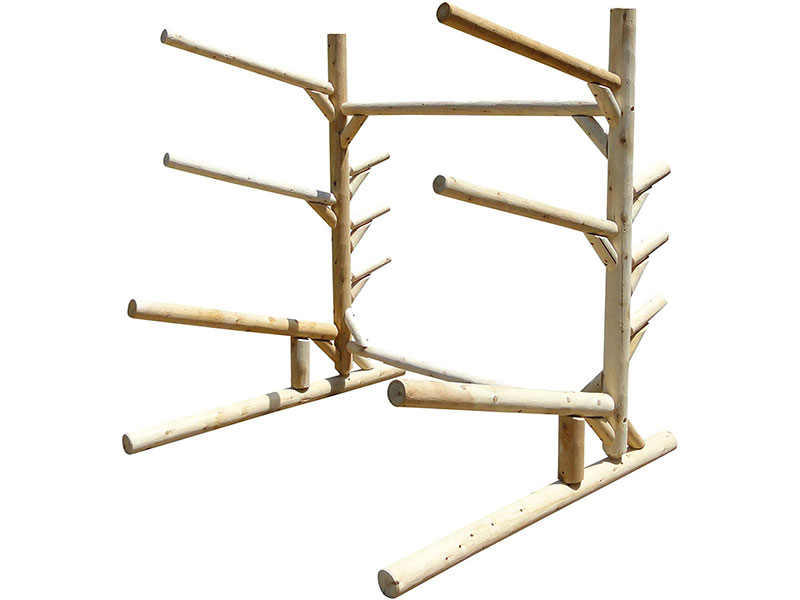
1 Sunfish Sailboat Plus 3 Canoes or Kayaks with Boom Rack
From: $ 1,138.99
*Choose From Available Finishes Below For Final Price
Free Shipping to the Contiguous United States
- Made of 100% northern white cedar logs with mortise and tenon joinery
- Holds Sunfish sailboat or Small Rowboat and 2 Canoes with 1 Kayak on feet.
- Made in Manitowish Waters, Wisconsion, Made in USA
- 1-year warranty, Finished with Transparent Finish
WE ALSO RECOMMEND
You may also like…
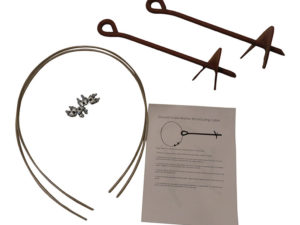
Ground Screw Anchor Kit Including Cable – 15″
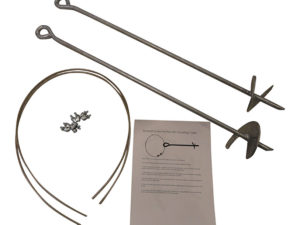
Ground Screw Anchor Kit Including Cable – 30″
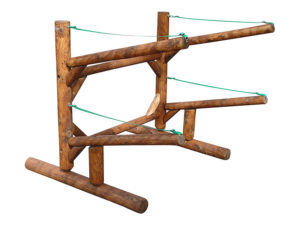
Custom Soft Rest UV Webbing
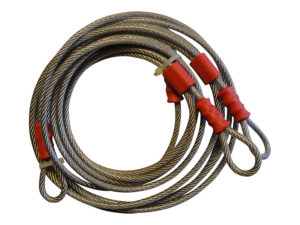
Lariat Security Cables Kit
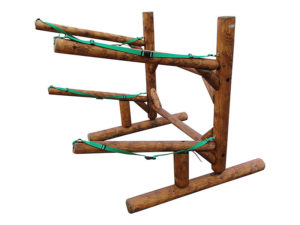
Safety Wind Tie Down Polyester Webbing
- Product Dimensions
- Product Details
- Instructional Assembly Video
- Frequently Asked Questions
- Shipping Information
- Reviews (3)
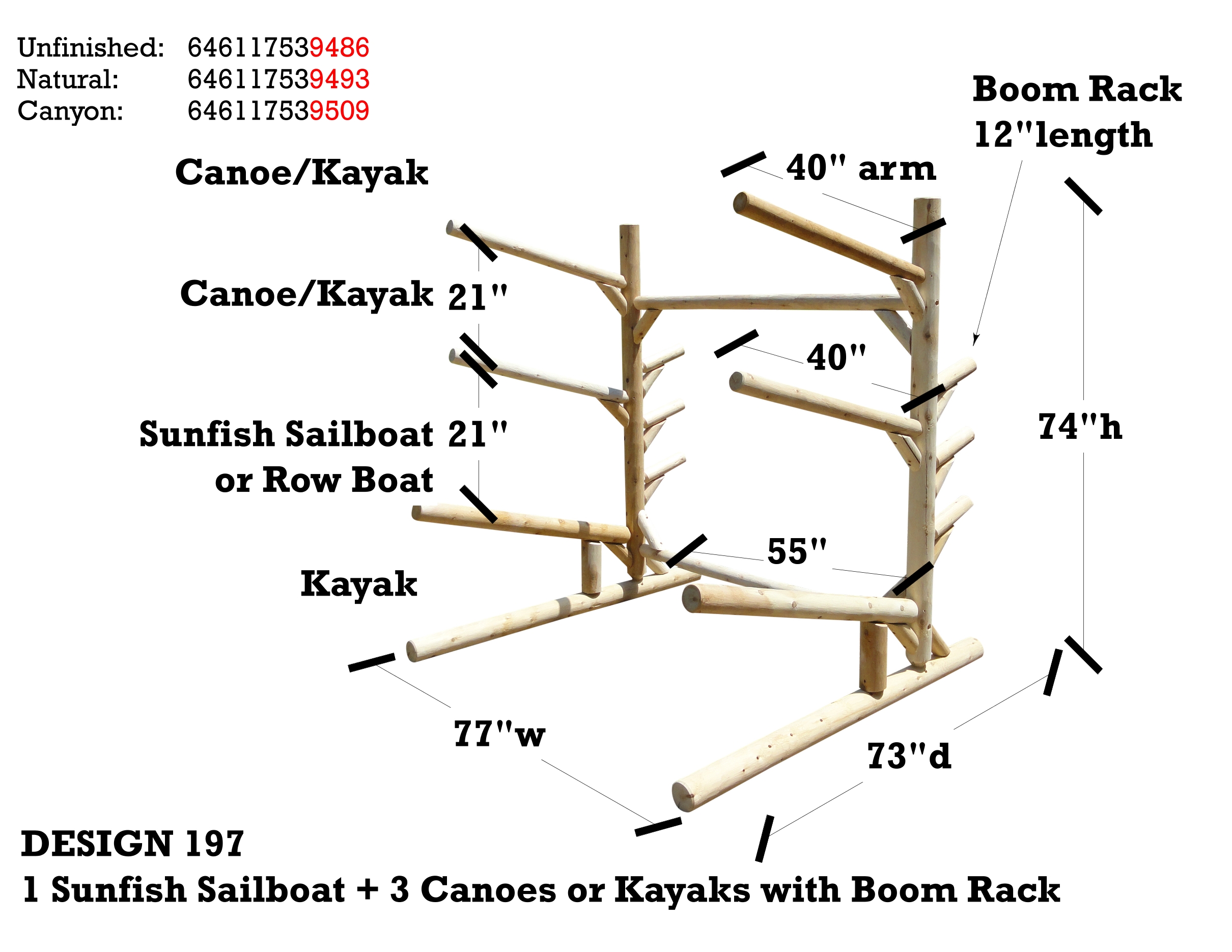
Low 2 SUP 2 Kayak Canoe Rack with Storage Pegs Details
The 1-Sunfish Sailboat + 3 Canoes or Kayak with boom rack is built with Northern White Cedar from the Upper Peninsula of Michigan. The Sunfish Boom fits on the back of the rack. This rack is designed for functionality and aesthetics by lake homeowners. It not only cares for and organizes your boats, but it can also be matched to its surroundings being log construction.
With finishing options, you can match dock, house, etc… or let it turn silver/gray with no finish, or you can use your own finish if so desired. This rack holds 1 Sunfish Sailboat, the heaviest of canoes, Surfboard, Kayaks, and SUPS (Stand Up Paddleboards). Each boat can weigh up to 100 pounds. This rack has up to a 400-pound capacity. We have worked with logs for over 23 years crafting log homes, furniture, and kayak racks. Each joint is glued and screwed for longevity. We use glued mortise-and-tenon joinery wherever possible. Hand made and finished by Log Artisans in Northern Wisconsin.
For Do-it-Yourselfers, use a stain or outdoor finish in the color of your choice and follow the instructions on the can. Breathable finishes will extend the life of the rack the most. It is best to let the wood age a bit prior to finishing it. This helps the stain to soak in. You can also choose to leave it unfinished. In this case, it will weather to a gray color and still last for many years.
Easy to lift kayak or canoe in and out. Locking kayak is easy with a cable lock from local kayak store. Durable kayak storage racks, can carry the heaviest of canoes, kayaks, and boat loads! Soft rest UV webbing available and tie down safety straps available now.
We want you to enjoy your Log Kayak Rack for years to come. To ensure it’s longevity, we recommend that the feet are not in direct contact with the ground, but rather raised and set on landscaping block or a similar product.
Our Kayak Racks can be bolted to dock or such or kit can be bought for anchoring to the ground.
We can install strapping to prevent any wind blowing the kayak off (this would be a rare occurrence).
For extra-long kayaks, canoes, or boats we can lengthen cross rails to accommodate. We can customize any rack for your row boat, paddle boat, etc. Several boats, kayaks, canoes, and paddle boats can fit together on the racks. Custom racks can be cemented into the ground or bolted to a platform.
Call for information as to which designs would work best for your assortment.
How will the Kayak Rack arrive?
Kayak racks are shipped unassembled and in a box. Log Kayak Racks products are shipped by UPS ground. You can expect your storage rack to arrive around 2 weeks after payment is received, or within the next 2 ½ weeks after placing the order (unless you call for a specific shipping date). They will come with glue, torx bits and fasteners needed to assemble and will go together in approx. 30 – 60 minutes with a common power drill or screw gun. Instructions are included and are available as a video online.
Can my delivery sit outside until I assemble it?
Yes, the Log Kayak Rack is for indoor or outdoor use, so no damage will occur to the product if it sits out until you can assemble it, or get it to the cabin. The only thing is the box and directions may get wet but there are always the downloadable and printable assembly instructions and assembly video on our website.
How do I Preserve the Life of this Kayak Rack?
We want you to enjoy your Log Kayak Rack for years to come. To ensure its longevity, we recommend that the feet are not in direct contact with the ground, but rather raised and set on landscaping block or a similar product.You can order it with a finish (upgrade) or you can finish it yourself. Use a stain or outdoor finish in the color of your choice and follow the instructions on the can. Breathable finishes will extend the life of the rack the most. It is best to let the wood age a bit prior to finishing it. This helps the stain to soak in. You can also choose to leave it unfinished. In this case, it will weather to a gray color and still last for many years.
Can Canoes, Paddle boards, Wake boards, Surf Boards, Small Rafts, Paddle Boats or Other Small Boats up to 100 lbs. fit on these Kayak Racks?
Yes. If you have a specific model in question contact us directly at 1-715-543-2006 and we’ll let you know if the dimension and size of your boat will fit.
Can I secure this Kayak Rack to the Ground?
Yes. You can bolt it to any wood surface with wood screws. There are also kits you can purchase from our online store, use the following instructions to do so using our kit.
- Insert the sharp tip of a spiral ring anchor into the dirt near the bottom center of the rack, if you are using one twist anchor. If you are using more than one, evenly space out.
- Twist the anchor by hand so that it spirals into the soil. Stop when the spiraled section is completely hidden underground and only the ring on top of the anchor is visible.
- Run a chain, cable or straps through the ring at the top of the anchor, then pass this same line over and around the center cross rail on kayak rack.
- Secure the cable or chain using a small padlock or combination lock if desired. Tighten straps to keep rack tight to the anchors in the ground.
- This method can be completed by using a kit purchased from LogKayakRack.com or purchase your own online or from a store. This method can be used to protect the rack from being stolen or from strong winds.
Is there an Alternative way of Ordering a Kayak Rack without using the Shopping Cart?
Yes, you may call to order or send a check in the mail to Hitch Exclusives 660 US Highway 51 Manitowish Waters, WI 54545
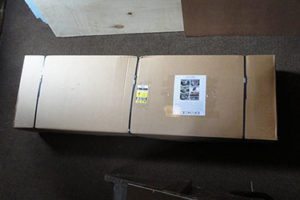
Each Ordered Product Includes:
- Feet, Cross Rails, Legs, Upper and Lower Arms, and Lower Support Posts (all labeled)
- Instruction Pack
- 3 Inch GRK Screws
- 4 Inch GRK Screws
- Two Tips, Green and Black for Drill or Screw Gun (in the bag with 3 inch screws)
- Decking Screws
What is Needed but NOT Included for Assembly:
- Rubber Hammer/Mallet
- Power Drill or Screw Gun
- Gloves (optional)
3 reviews for 1 Sunfish Sailboat Plus 3 Canoes or Kayaks with Boom Rack
Per Ostman (Verified Rack Owner) – December 4, 2022
Great quality boat rack kit and easy to assemble.
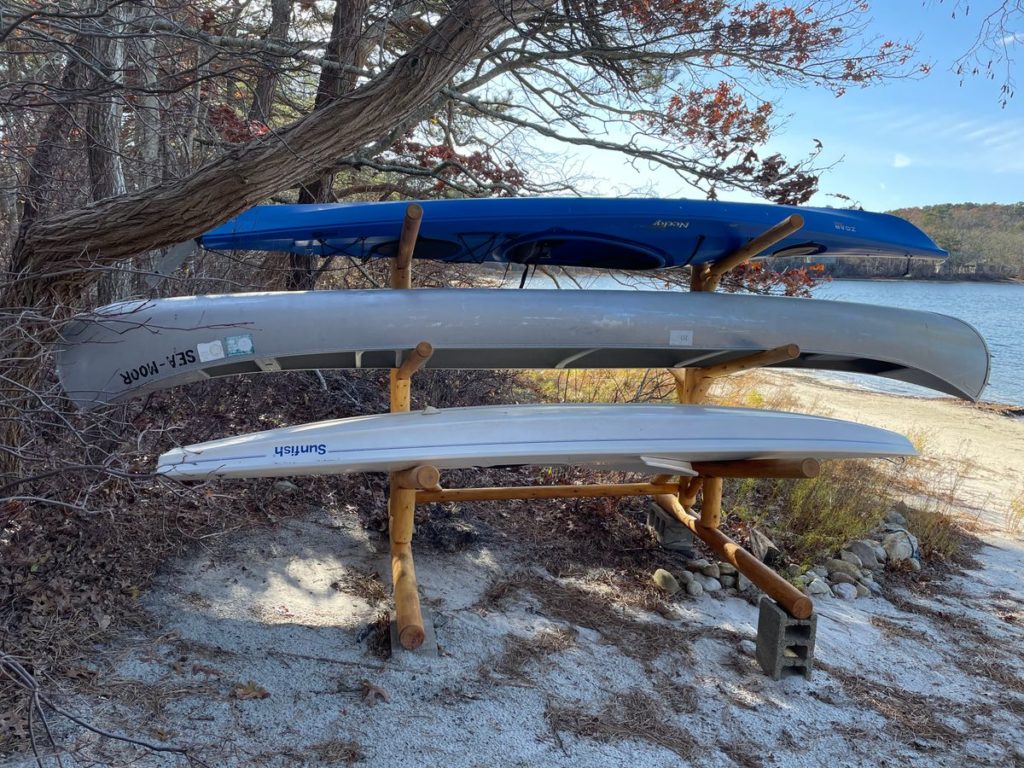
Ross Martin (Verified Rack Owner) – July 18, 2022
Exactly what I was hoping
Anonymous – September 4, 2015
Perfect for our cottage “Thanks Kurt. Your product was perfect for our cottage. Usually I see something perfect and then find it does not ship to Canada.”
Your email address will not be published. Required fields are marked *
Your review *
Name *
Email *
Save my name, email, and website in this browser for the next time I comment.
YOU MAY ALSO LIKE
Related products
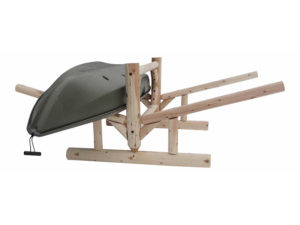
2 Place Kayak / Canoe Rack – Double Sided
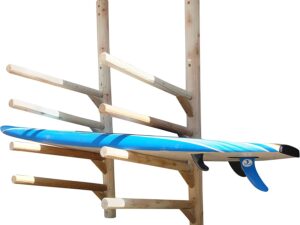
3 SUP/Surfboard + 1 Kayak Wall Rack
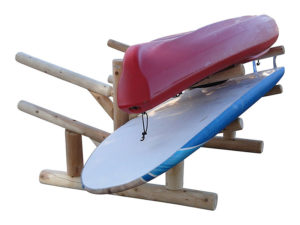
4-Place Stand Up Paddle Board Storage Rack
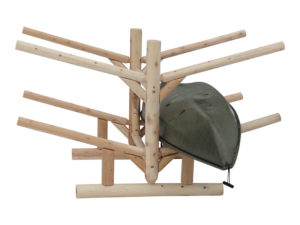

IMAGES
VIDEO
COMMENTS
spread your sail out on. 3. Align the lower boom along the foot of the sail and the upper boom along the luff (Figure 25). The Sunfish logo should face the upper boom; the boom that does not have any blocks attached. 4. The two booms are attached together by interlocking eye bolts. This corner of the sail is known as the tack.
This is the furthest aft block on the Sunfish boom. Equipped with a swivel for smooth action of the .. $22.00 Add to Cart. Sunfish, Top Mast Cap, 90431. This is the cap fitting for the top of the Sunfish mast. ... Sunfish Sail Ring (Single Ring), Blue. The sail rings fit around the booms and clip onto the sail, holding it securely. Qua..
you can spread your sail out on. 3. Align the lower boom along the foot of the sail and the upper boom along the luff (figure 25). The Sunfish logo should face the upper boom (the boom that does not have any blocks attached). 4. The two booms are attached together by interlocking eye bolts. This corner of the sail is known as the tack.
Process of Stepping the Mast, Which Involves Attaching the Mast to the Boat's Hull. Stepping the mast is a crucial step in rigging your Sunfish. Follow these steps carefully: Attach the Mast Step: The mast step is a metal fitting on the boat's deck near the bow. Insert the bottom end of the mast into the mast step.
Sunfish - Spars and Common Parts. Sunfish, the most popular Sailboat in the world. Common Replacement Spar Parts are listed below. Sunfish Masts use a 2 1/4" OD (.083" wall) Round Tube. Sunfish Booms and Sprits use a 1 1/2" OD (.065" wall) Round Tube. Please note: Masts and Booms cannot be shipped by FedEx or UPS.
Sunfish Sail Rings. $29.99. Quick View. Sunfish Gooseneck Assembly. $160.82. Quick View. Sunfish Mast Base Cap. $25.90. Quick View. Sunfish Mast. $198.00. Quick View. Sunfish Mast Top Cap. $7.96. Quick View. Sunfish Boom Eyestrap. $5.00. Quick View. Sunfish Boom Cap Without Eye. $12.94. Quick View. Sunfish Boom Cap With Eye. $15.01. Quick View ...
Secure the sail to the halyard and hoist it up the mast, ensuring proper attachment. Connect the boom to the gooseneck at the bottom of the mast. Attach the mainsheet to the rear of the boom and thread it through the blocks on the Sunfish. Connect the mainsheet to the traveler, a sliding bar at the back of the boat.
Description. Recreational booms are standard in their setup - there are no cleats for the outhaul or cunningham, as on the Racing booms. If you have a Sunfish that has served faithfully on a beach or has not been actively racing, these are the booms for you. Please note that the Lower Boom does not include a gooseneck.
Rigging the Sunfish sailboat involves the following steps: - Attach the mast to the mast step on the boat's deck. - Connect the boom to the mast and secure it with a boom vang. - Slide the daggerboard into the daggerboard trunk and secure it. - Attach the rudder to the rudder gudgeons at the back of the boat.
AeroSouth, Sunfish Mainsheet Hanger Clip (Set of 3, Blue), SNF-MNS-HNG-CLP-B. Set of three Sunfish mainsheet hanger clips. Made of durable PETG plastic. Fitted for the 1.5" diam.. $25.00. Sunfish Direct offers a complete line of sunfish hardware, parts and supplies for the sunfish enthusiasts. One source for all of your sunfish parts and sales.
Sunfish Boom Aft End Cap $13.00: End Cap for Sunfish® Boom With Eye Price: $17.99 Sale price: $13.99: Clamcleat CL211 Mk I $14.99: Aluminum Quick Release for Sunfish Gooseneck Price: $9.99 Sale price: $3.99: Sunfish Aluminum Mast $210.00: Sunfish Aluminum Upper Boom $195.00: Sunfish Recreational Aluminum Lower Boom $215.00: Sunfish Stainless ...
The Sunfish sailboat has a unibody construction with a cockpit for the sailor and a single triangular sail. It is lightweight and has a shallow draft, allowing it to sail in various conditions, including calm lakes and open waters. ... Check the condition of the sail, mast, boom, and rigging for damages or issues. 2.
This video explores how halyard position on gaff, gooseneck position on boom, Cunningham, and outhaul can add to sailing pleasure and performance.
Sunfish Sailor, Lee Montes, shows you how to rig a Sunfish Sailboat with a Jens Rig. With detailed descriptions of the GUST ADJUST, The Long Island Jens, The...
Class legal Mark II sail. 60mm Harken ratchet block. Padded toe strap. Line kit. Laser sailboat drawing. Stop in and take a look at our available Sunfish and Lasers. Bay Sails Marine, located on Cape Cod in Wellfleet, Massachusetts, is a full service boat yard, the exclusive dealer of Alcar boats, and the original pumpout boat manufacturer.
3: Untie the sail/spar bundle knot and pull the line to undo the bundle. The spars and sail are usually bundled using the mainsheet and halyard. 4: Attach the Boom Sling. Find a spot around fifteen inches below where your halyard meets the upper boom. Pull one side of the Boom Sling around the upper boom and the halyard.
Sunfish Builder Chronology. 1952 - 1969 Alcort, Inc. (founded 1945) 1969 - 1986 AMF. 1986 - 1988 Loveless & DeGarmo, dba, Alcort Sailboats Inc. 1988 - 1991 Pearson Yacht Co. 1991 - 1997 Sunfish/Laser, Inc. 1997 - 2007 Vanguard. 2007 - Laser Performance. Change in class rules permitted a new, slightly deeper daggerboard in the mid-1990's.
Overview: This is a Spar Bag for Sunfish® sailboat. The bag is generously sized to hold the mast, boom, and upper boom, with the sail attached for the Sunfish® sailboat. The bag can be built in any of our three stock cover fabrics (fabric and color can be chosen to match your boat cover) and includes two webbing carry handles and a drawstring ...
1 Sunfish Sailboat Plus 3 Canoes or Kayaks with Boom Rack. DESIGN #197. Rated 5.00 out of 5 based on 3 customer ratings. ( 3 customer reviews) From: $ 1,138.99. *Choose From Available Finishes Below For Final Price. Free Shipping to the Contiguous United States. Made of 100% northern white cedar logs with mortise and tenon joinery.
Get the best deals on Sailing Sunfish Sailboats when you shop the largest online selection at eBay.com. Free shipping on many items | Browse your favorite brands | affordable prices. ... Sunfish Sailboat Bronze Gooseneck 90638 and Sunfish 16 sail rings for boom/mast. Pre-Owned. $49.95. $8.95 shipping. Vintage Sunfish Sailboat Used Tiller ...
Fitted for the 1.5" diameter standard Sunfish boom. Color: Translucent Red. Proudly engineered and produced in the USA! Be Sure to check out other color options. ... Complete line kit for the your Sunfish sailboat. This rope pack includes replacements for all the li.. $54.95 Add to Cart. Sunfish, Race Line Kit, 10107. Complete racing line kit ...